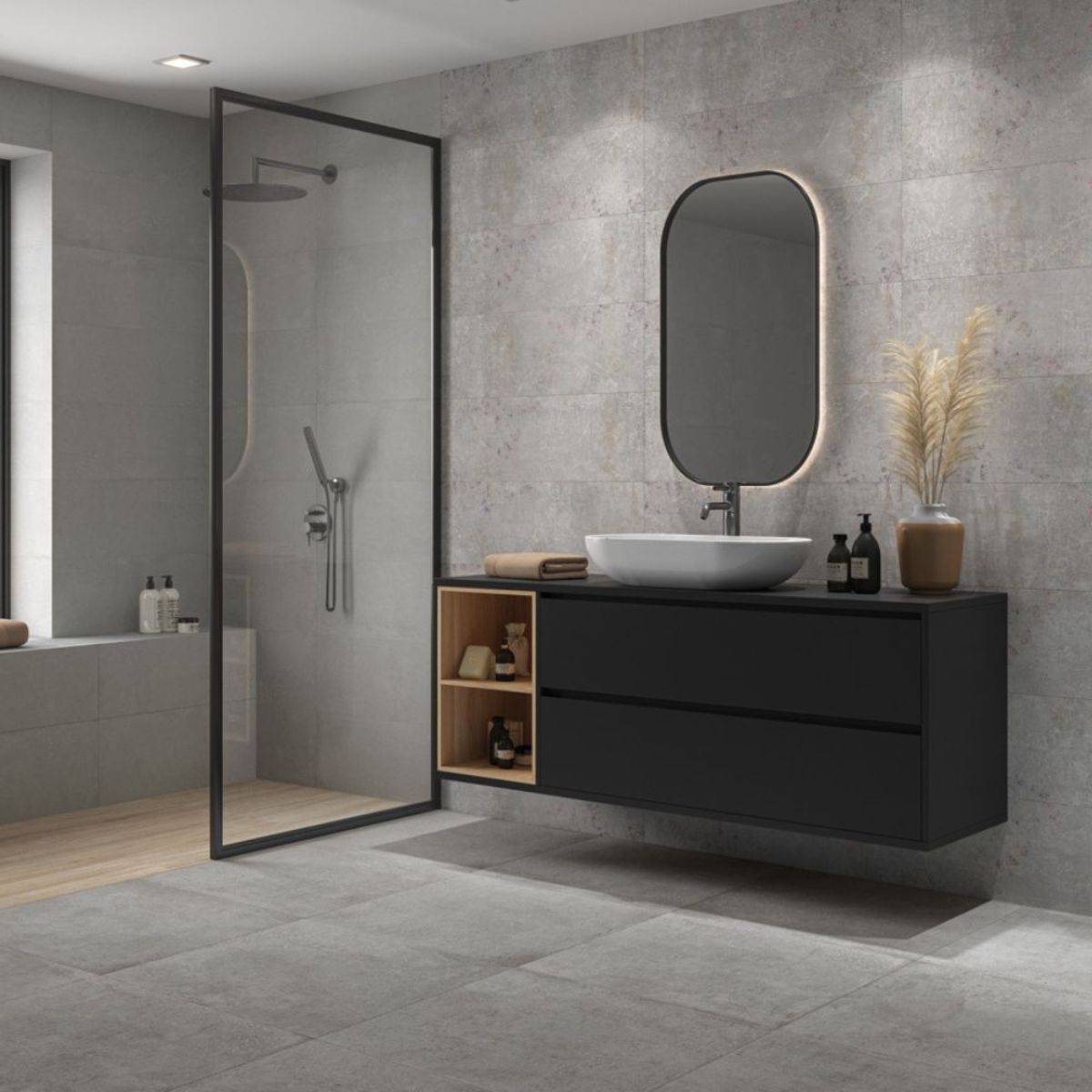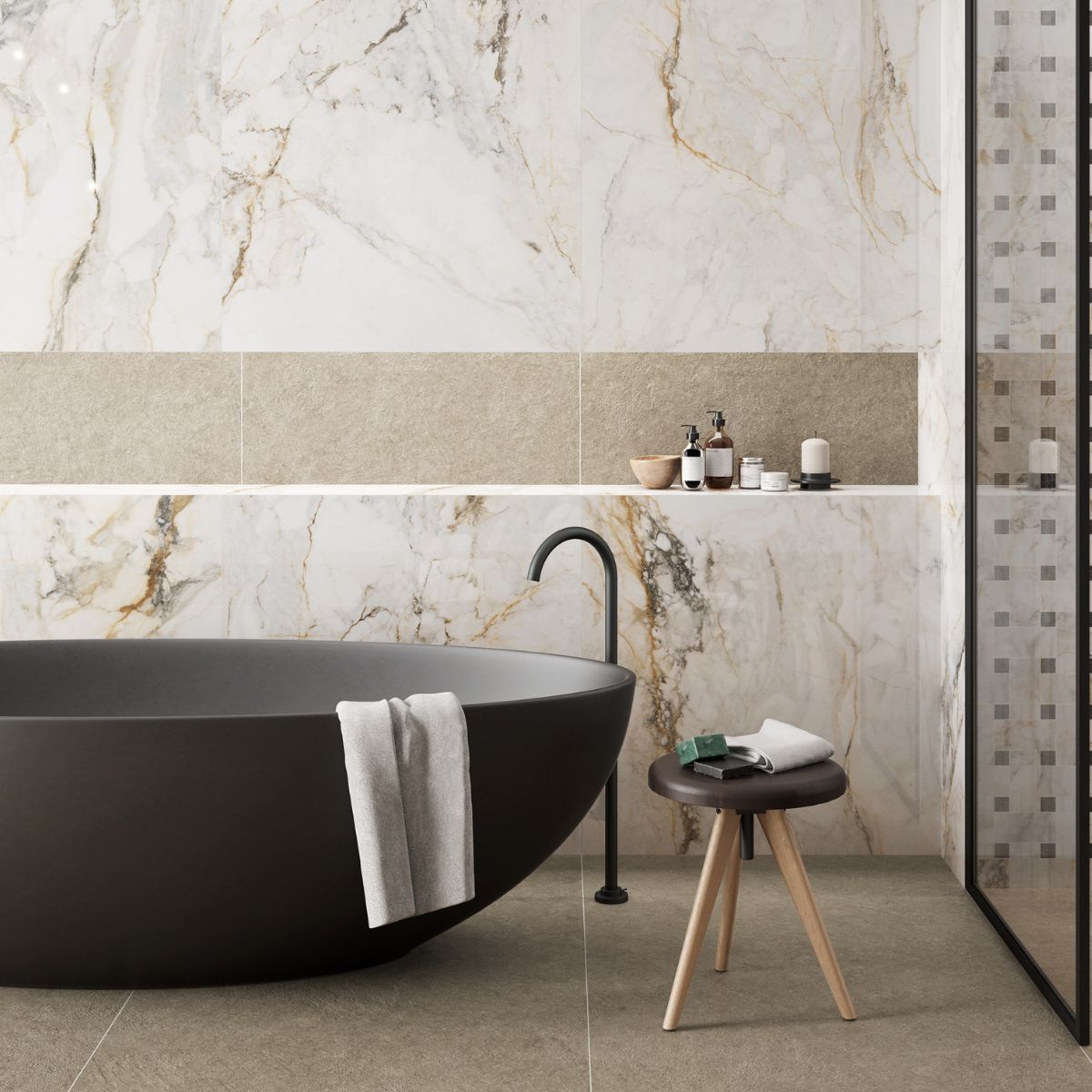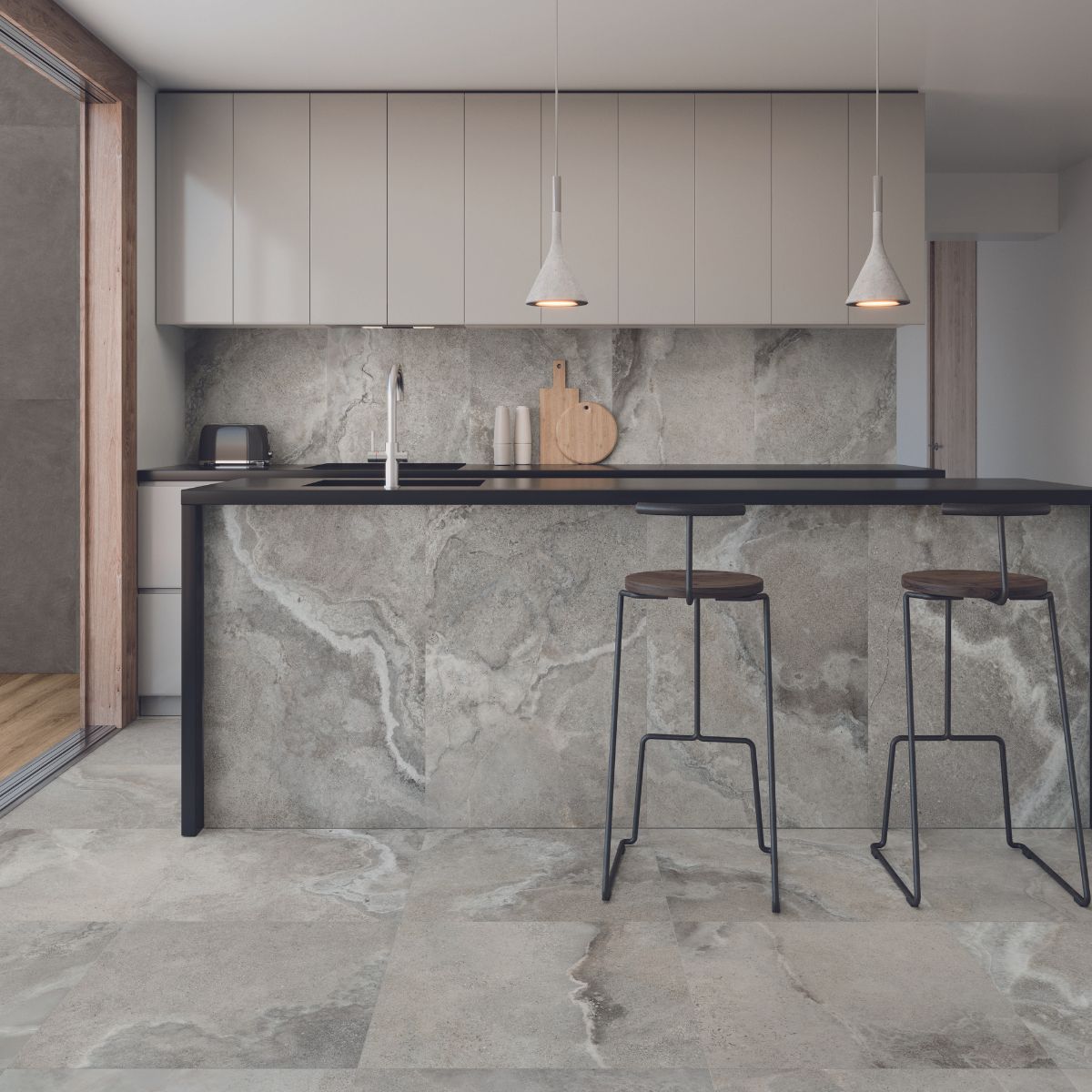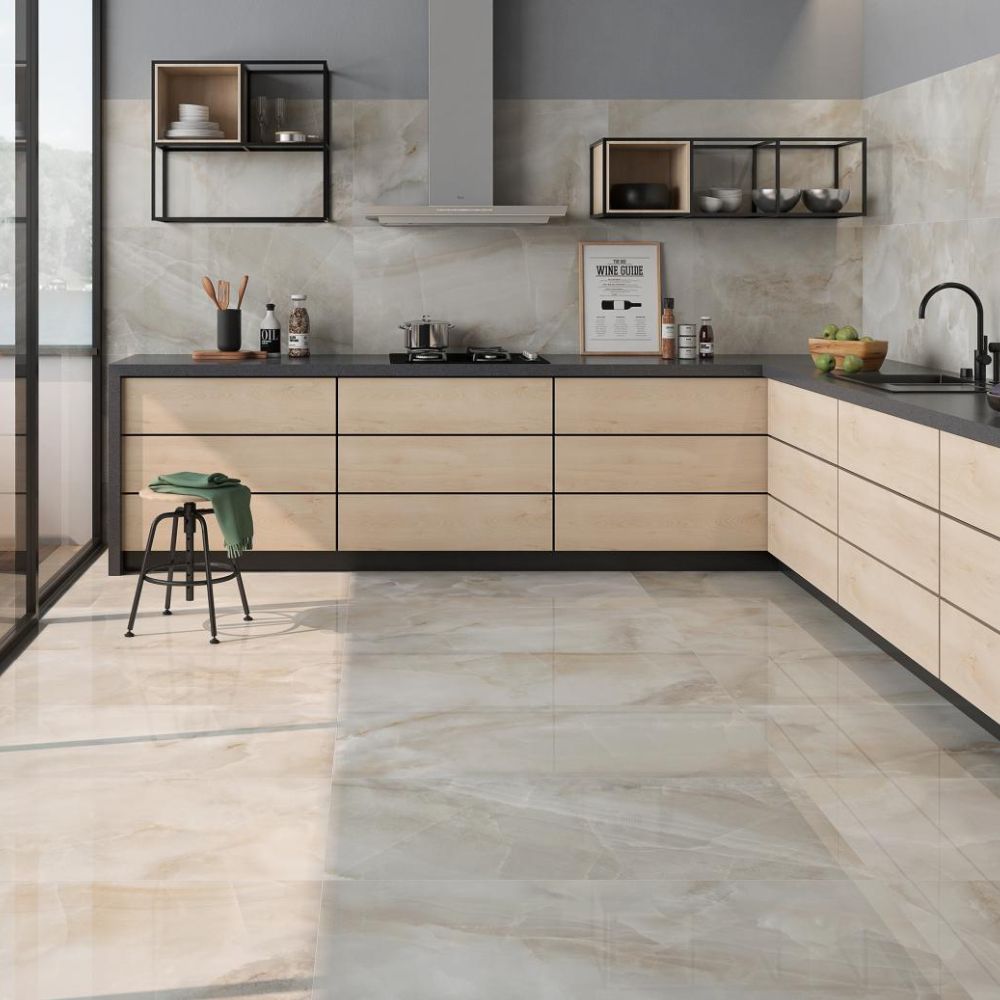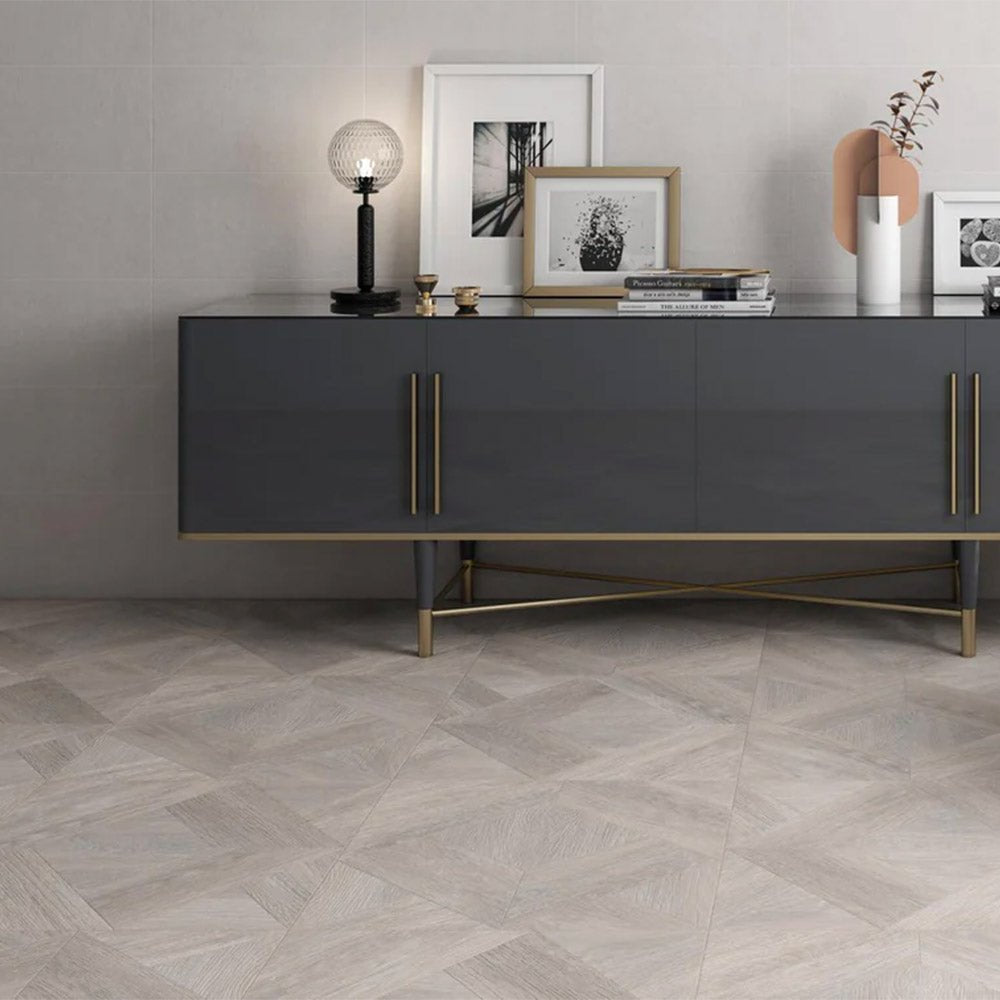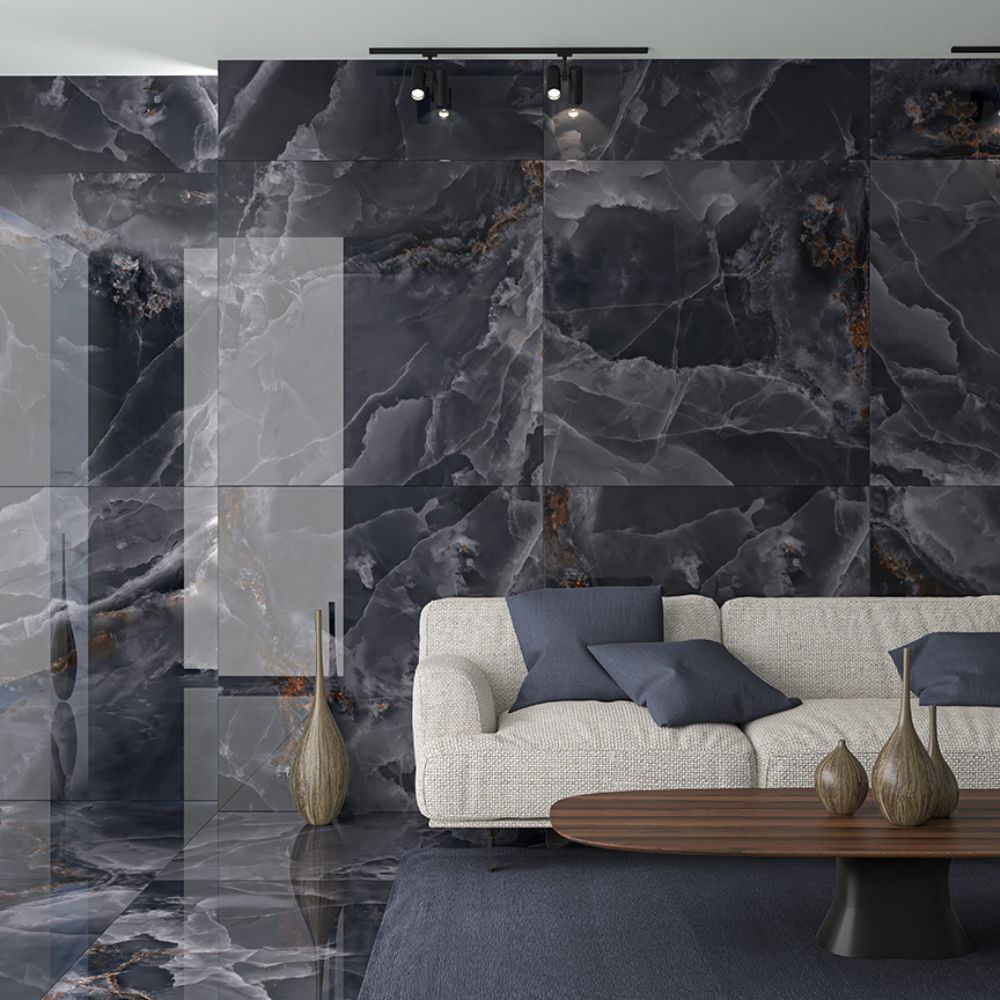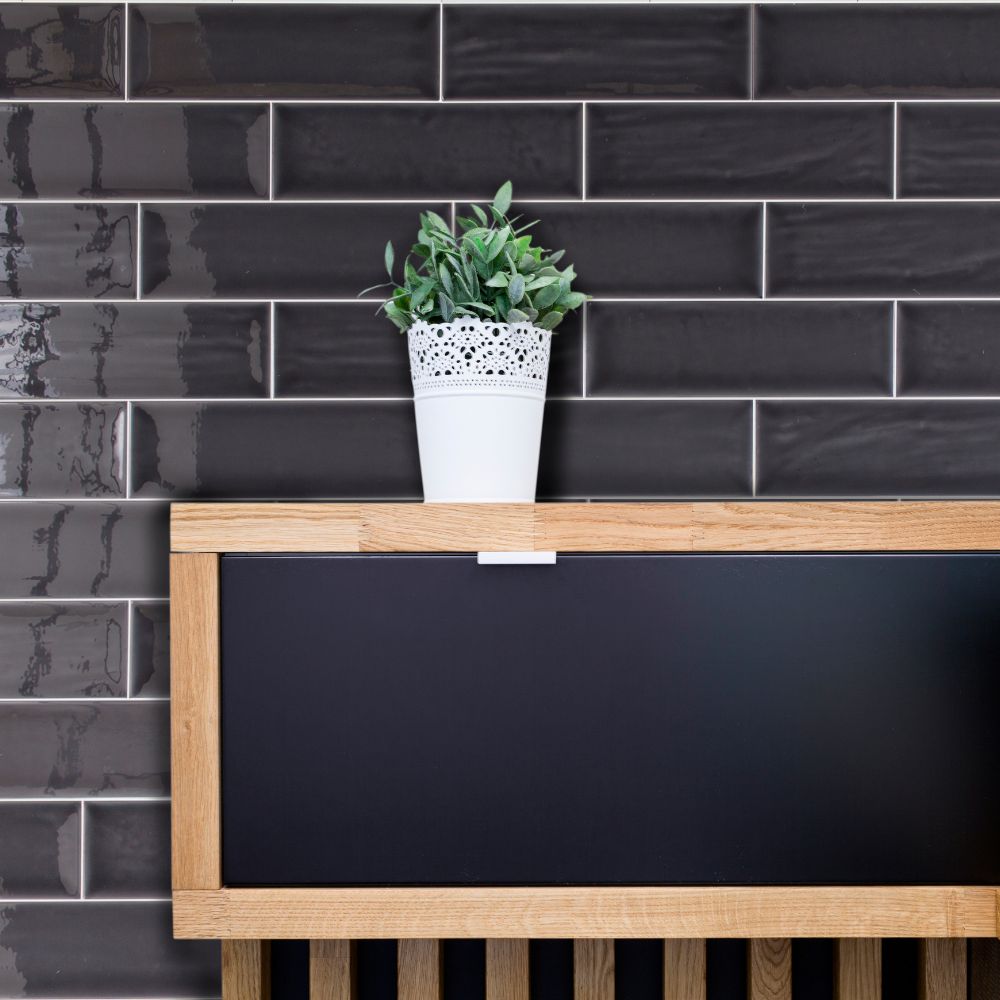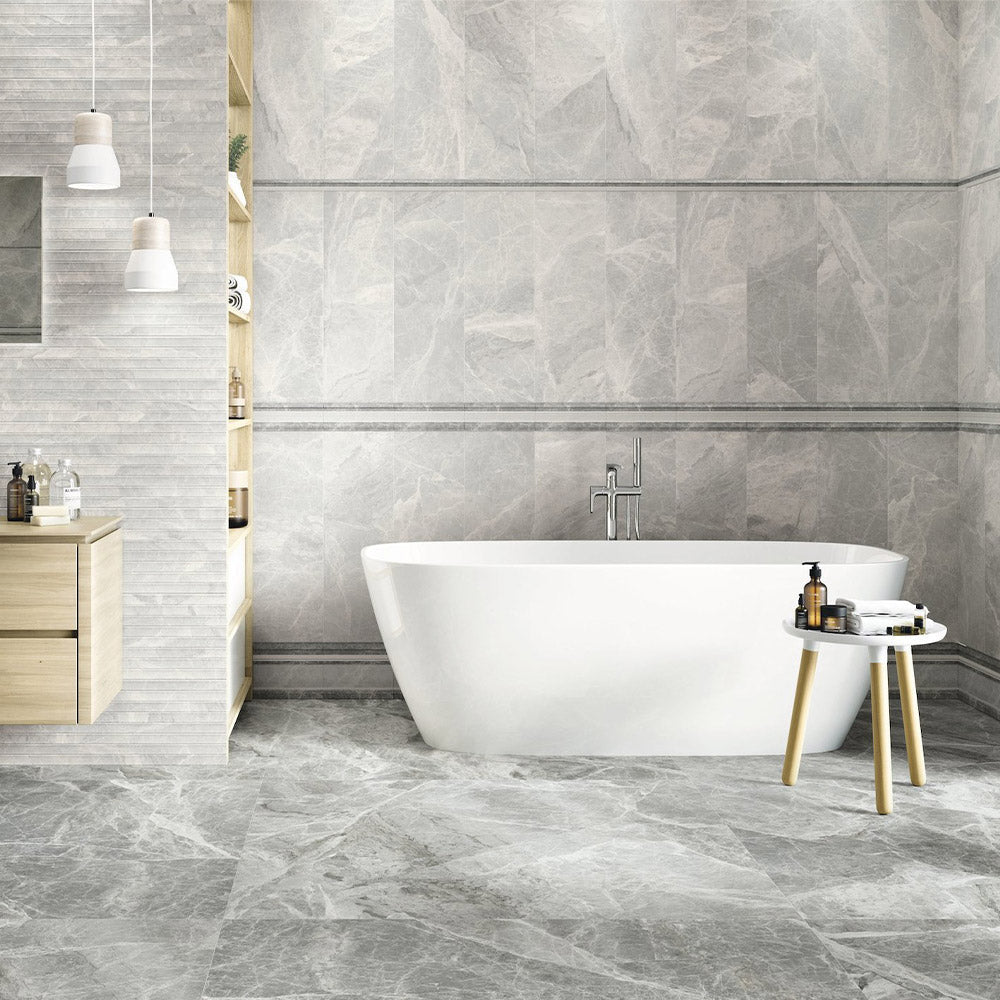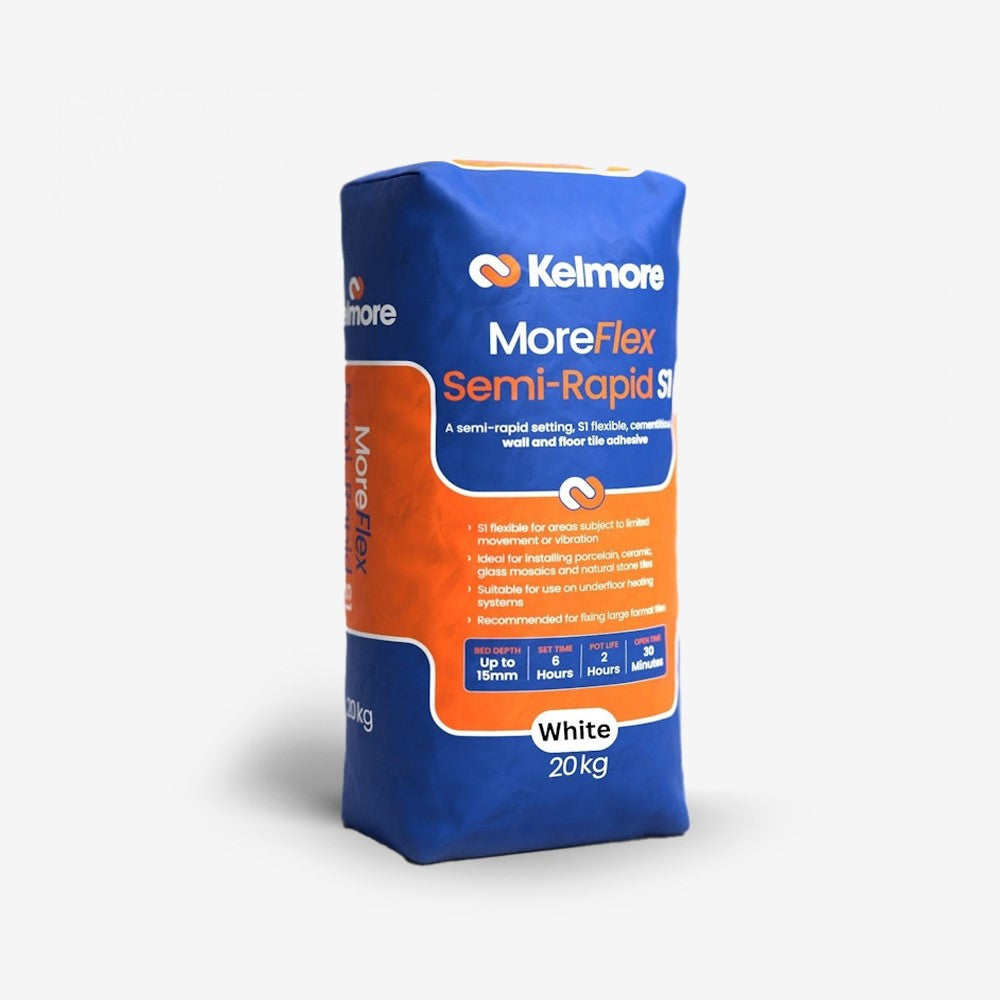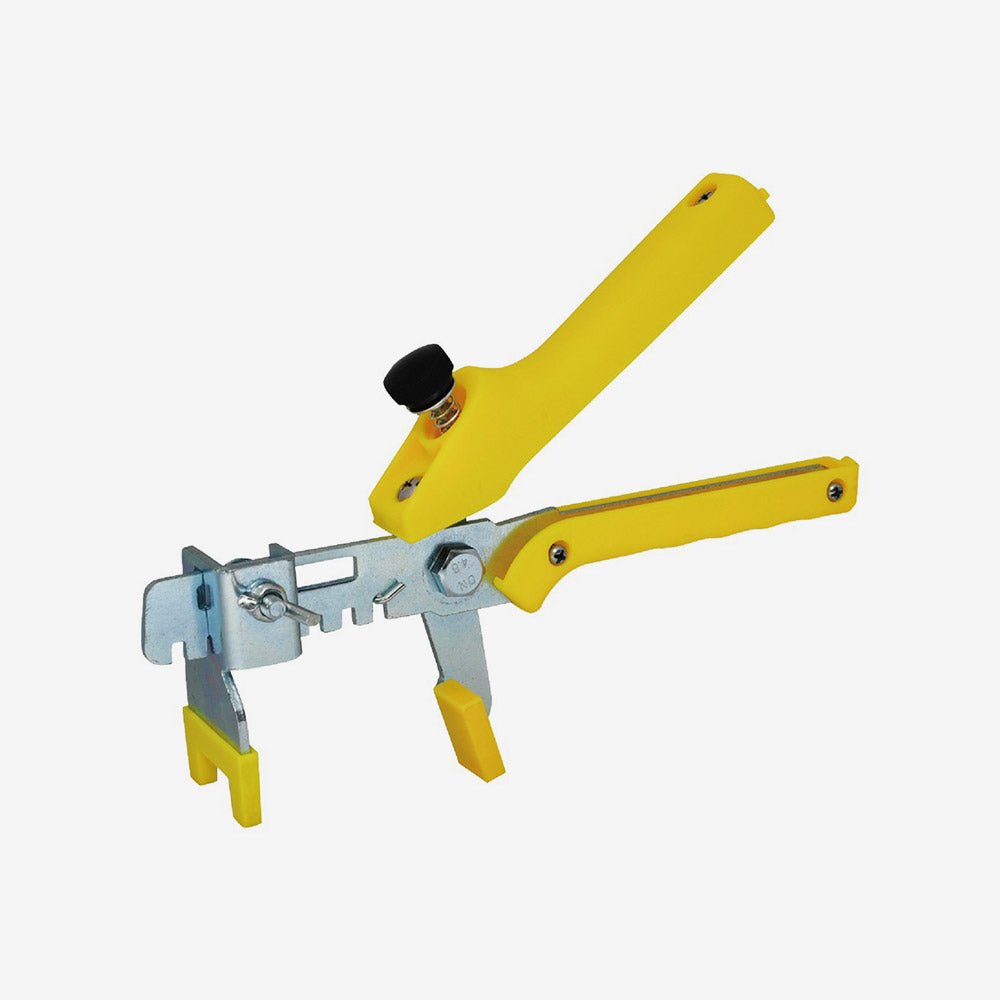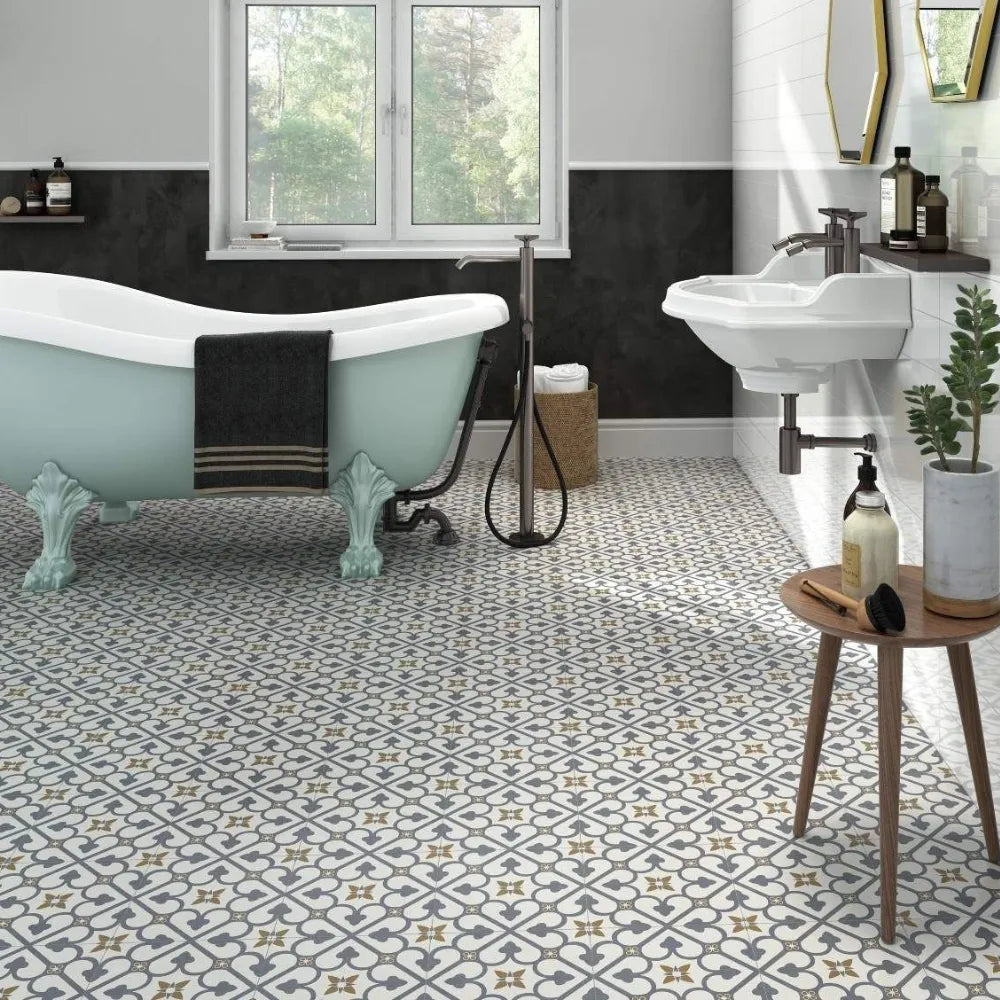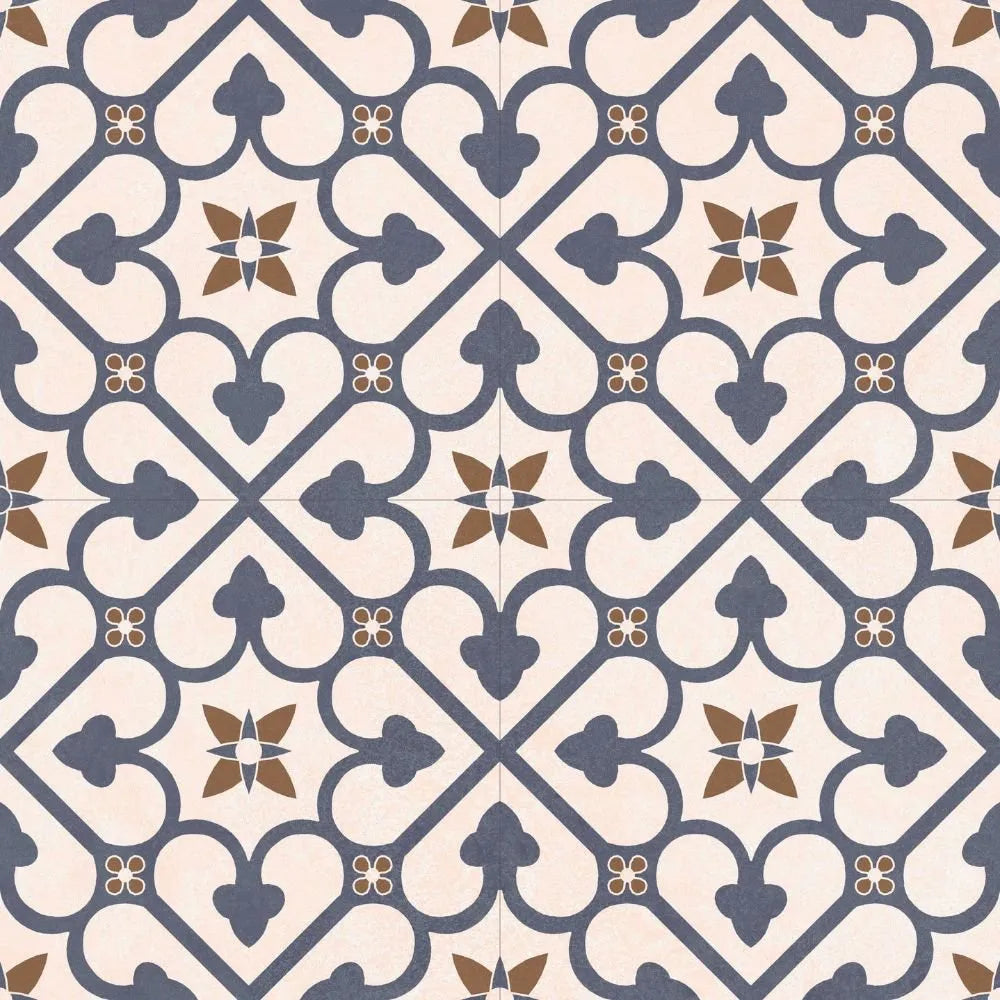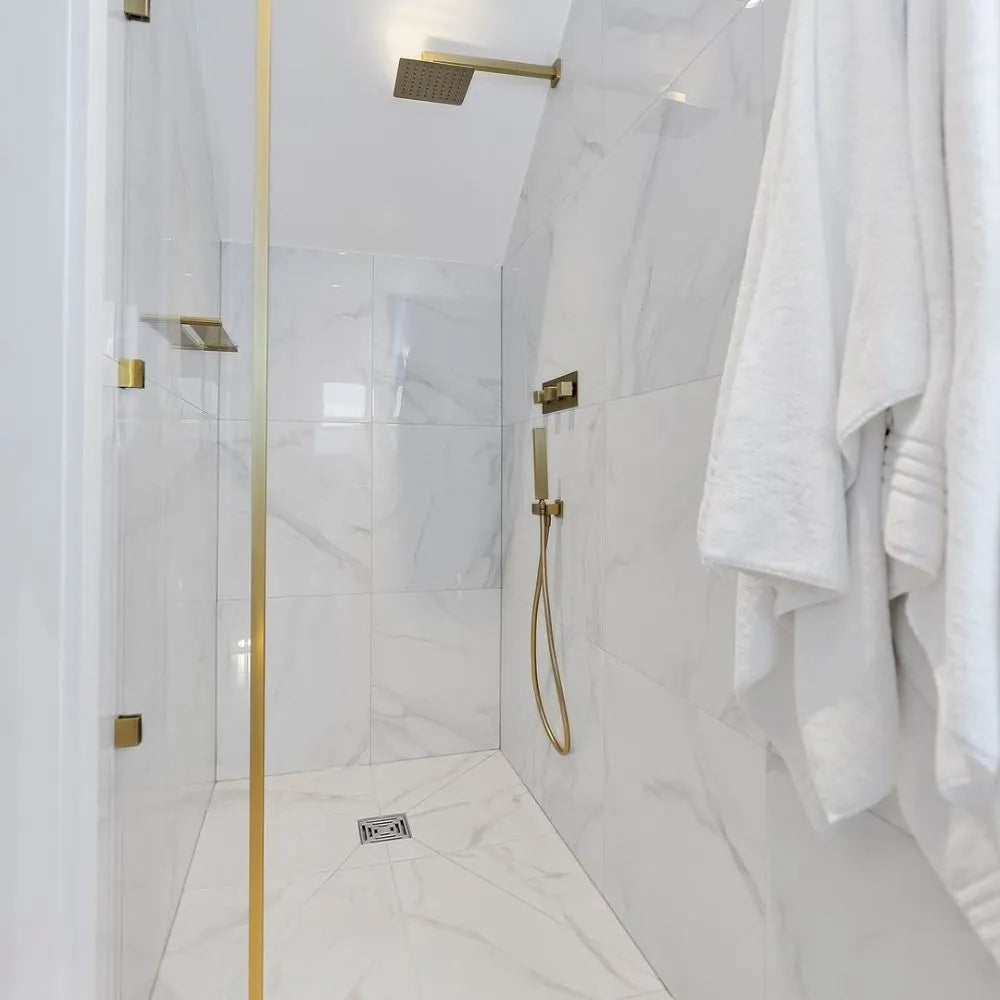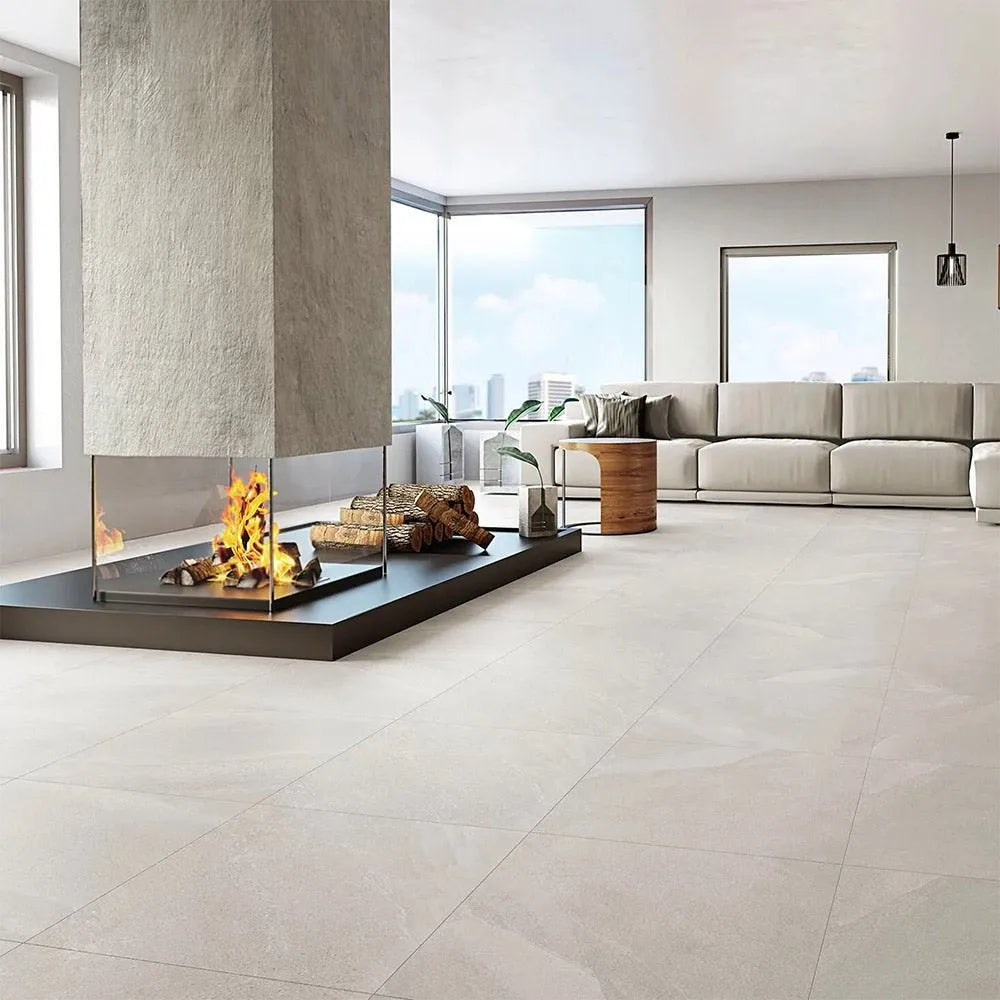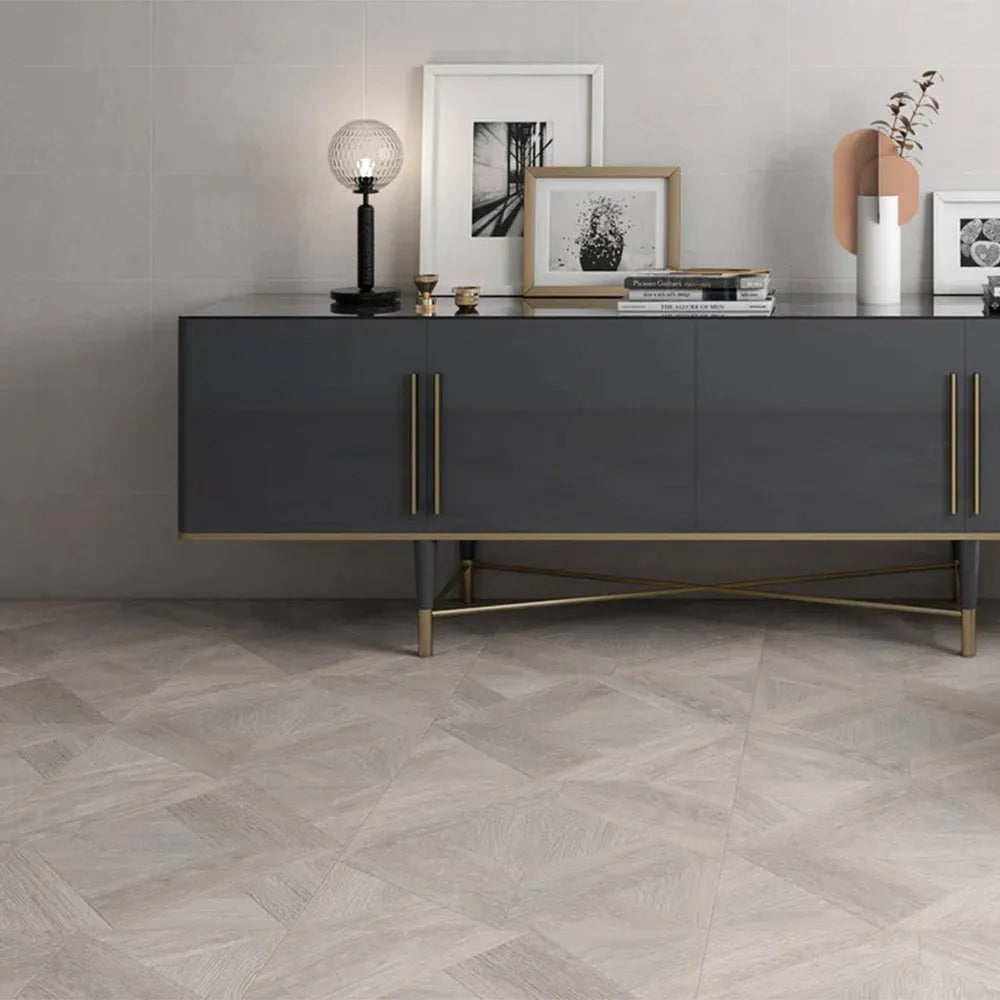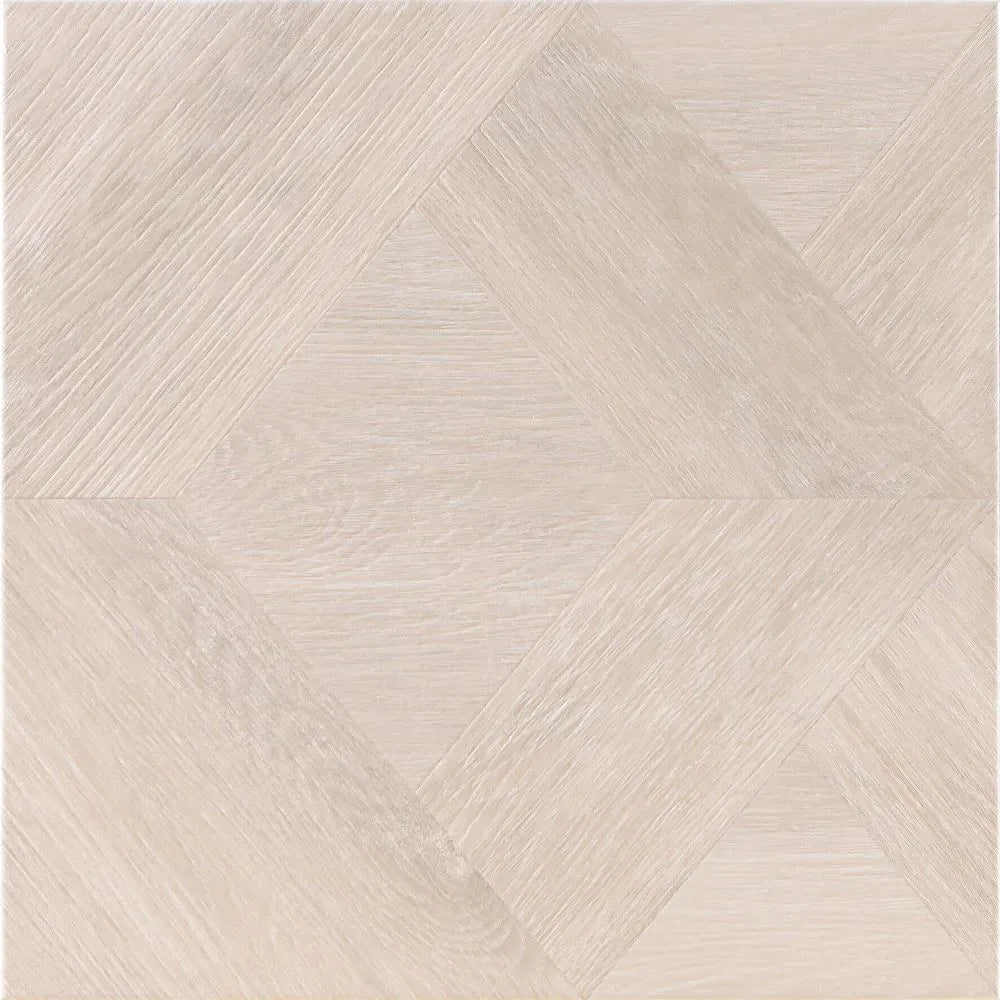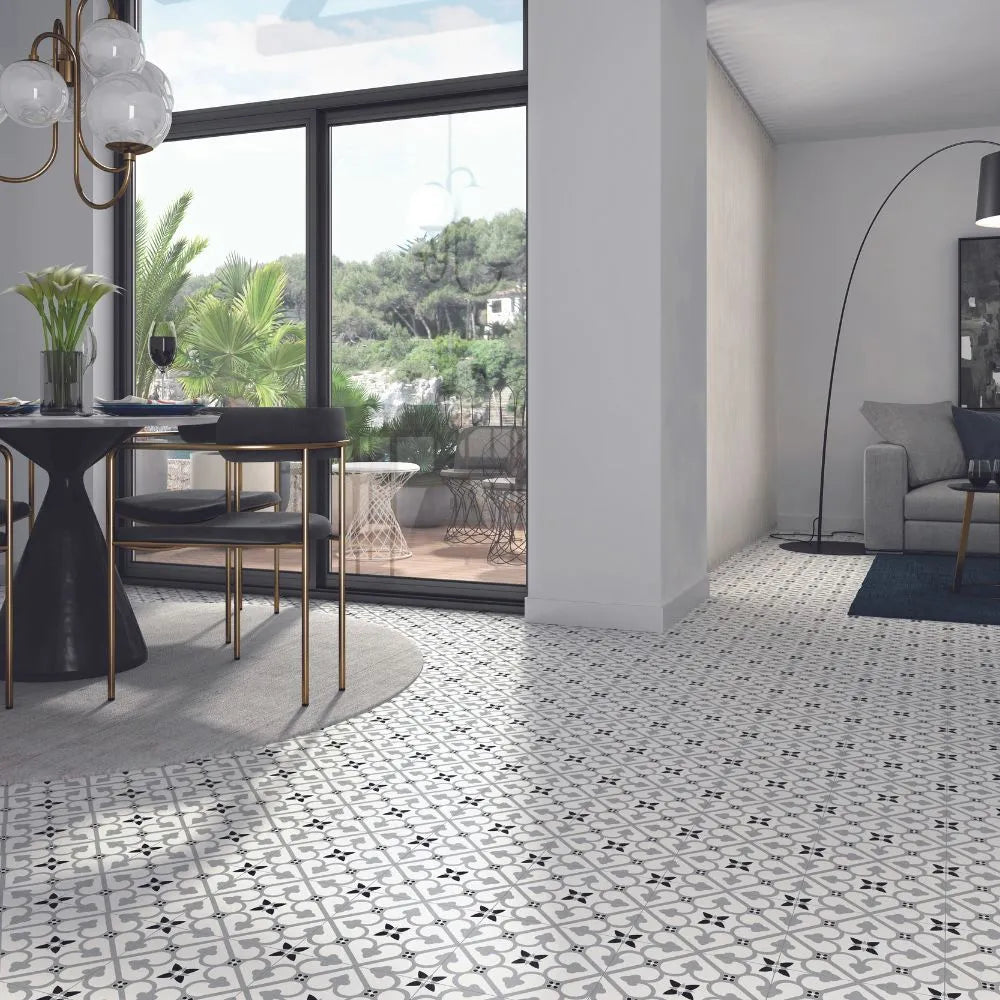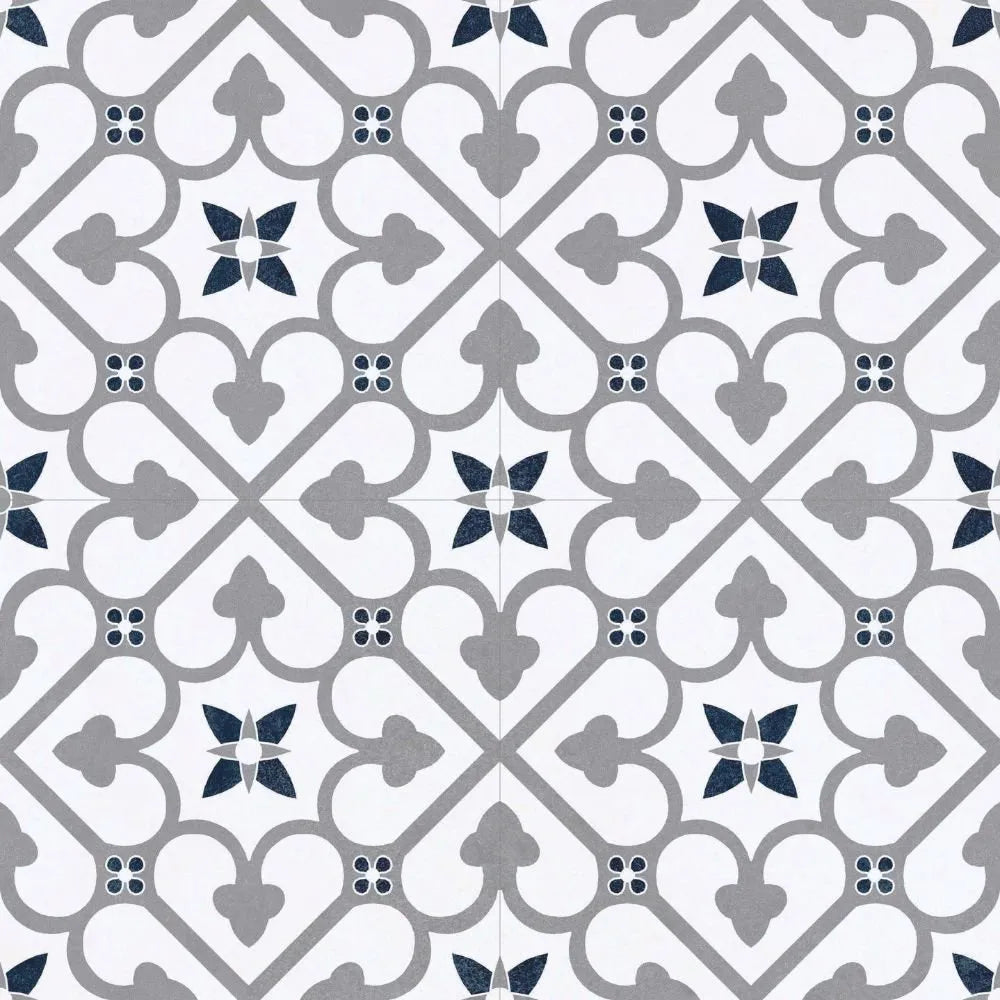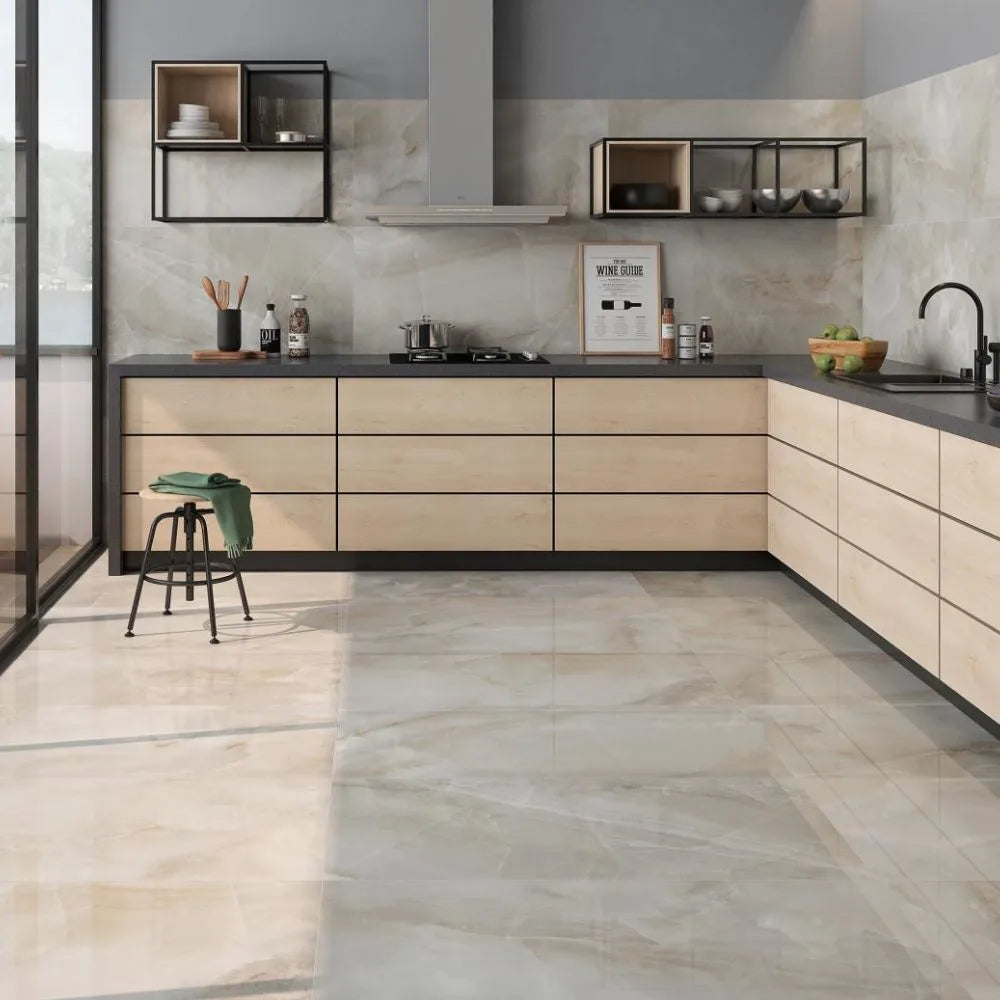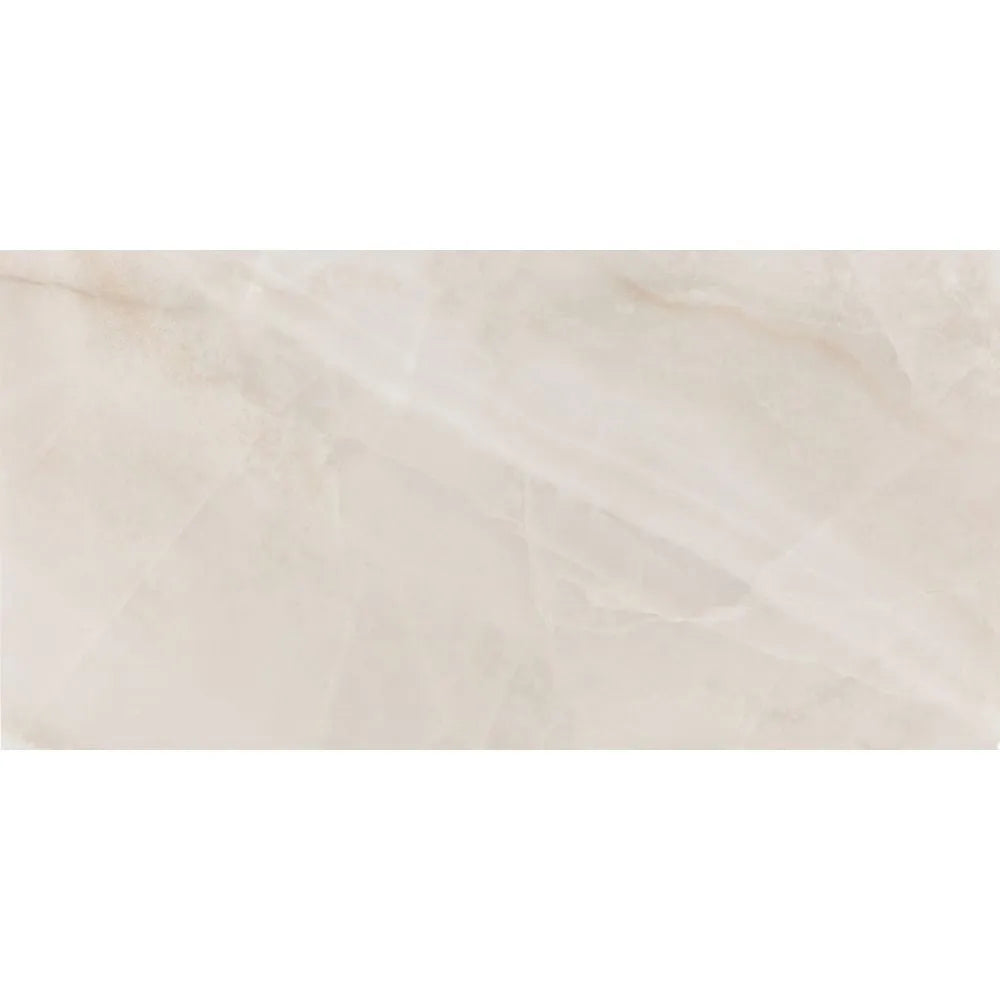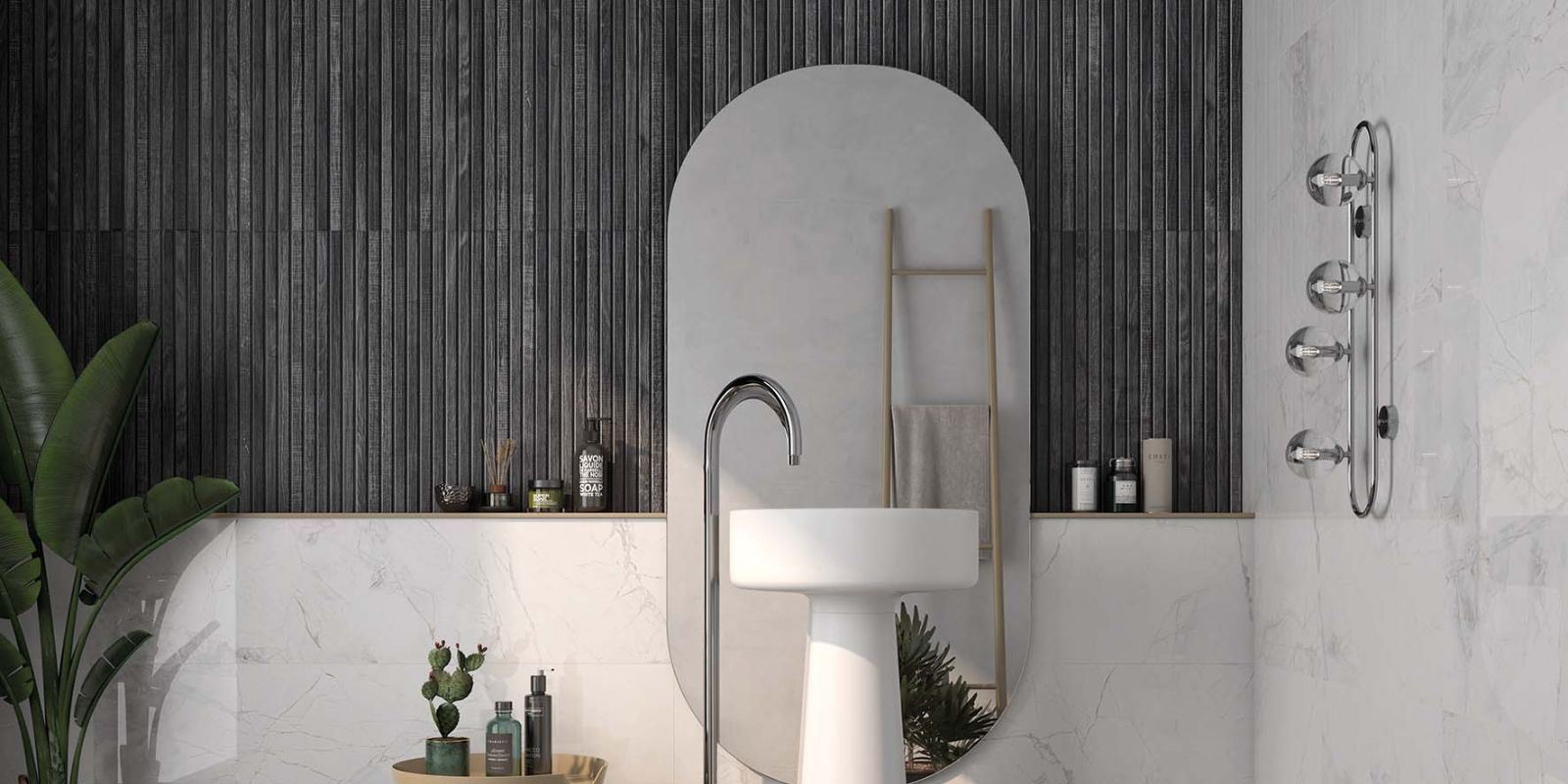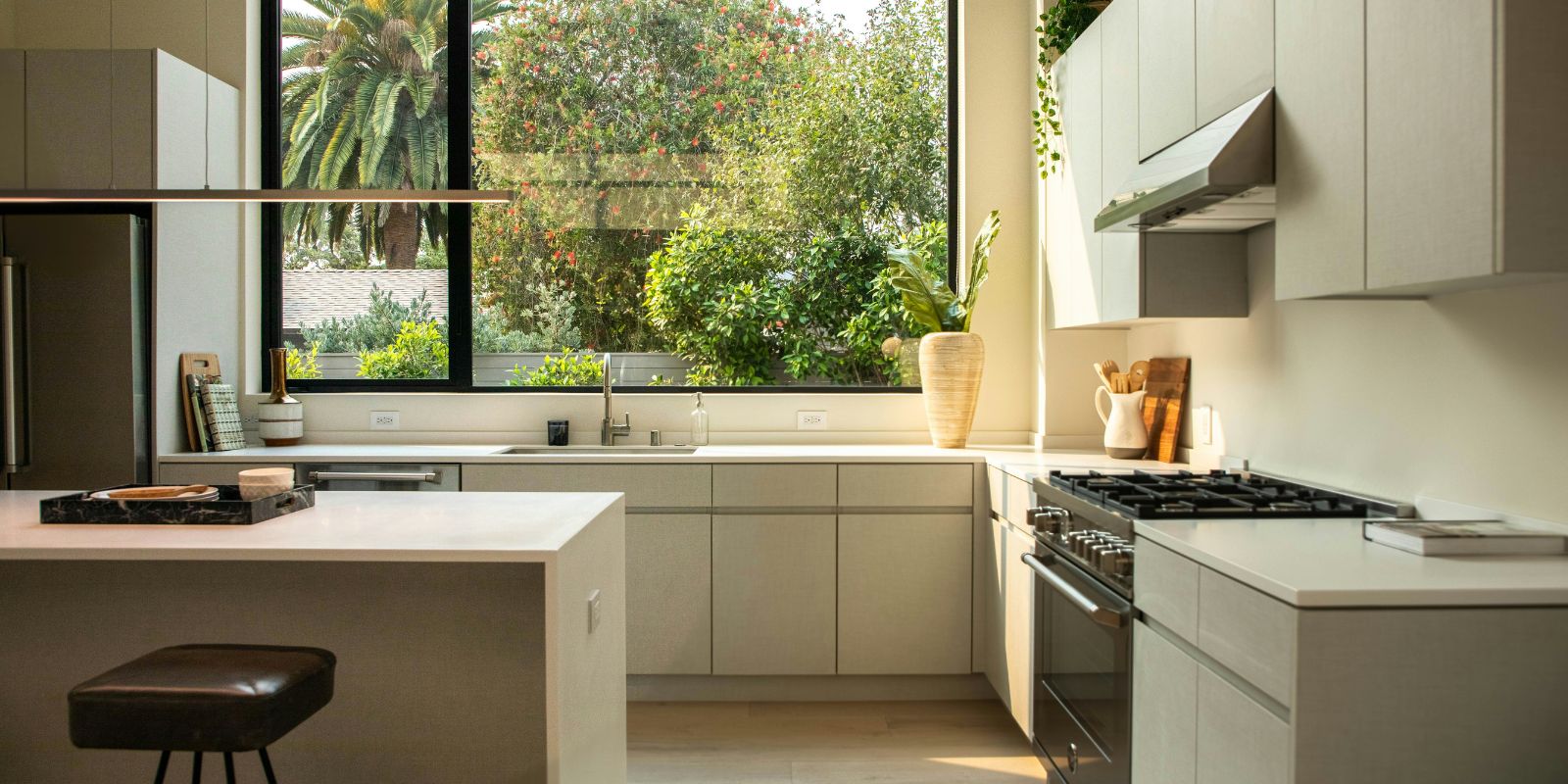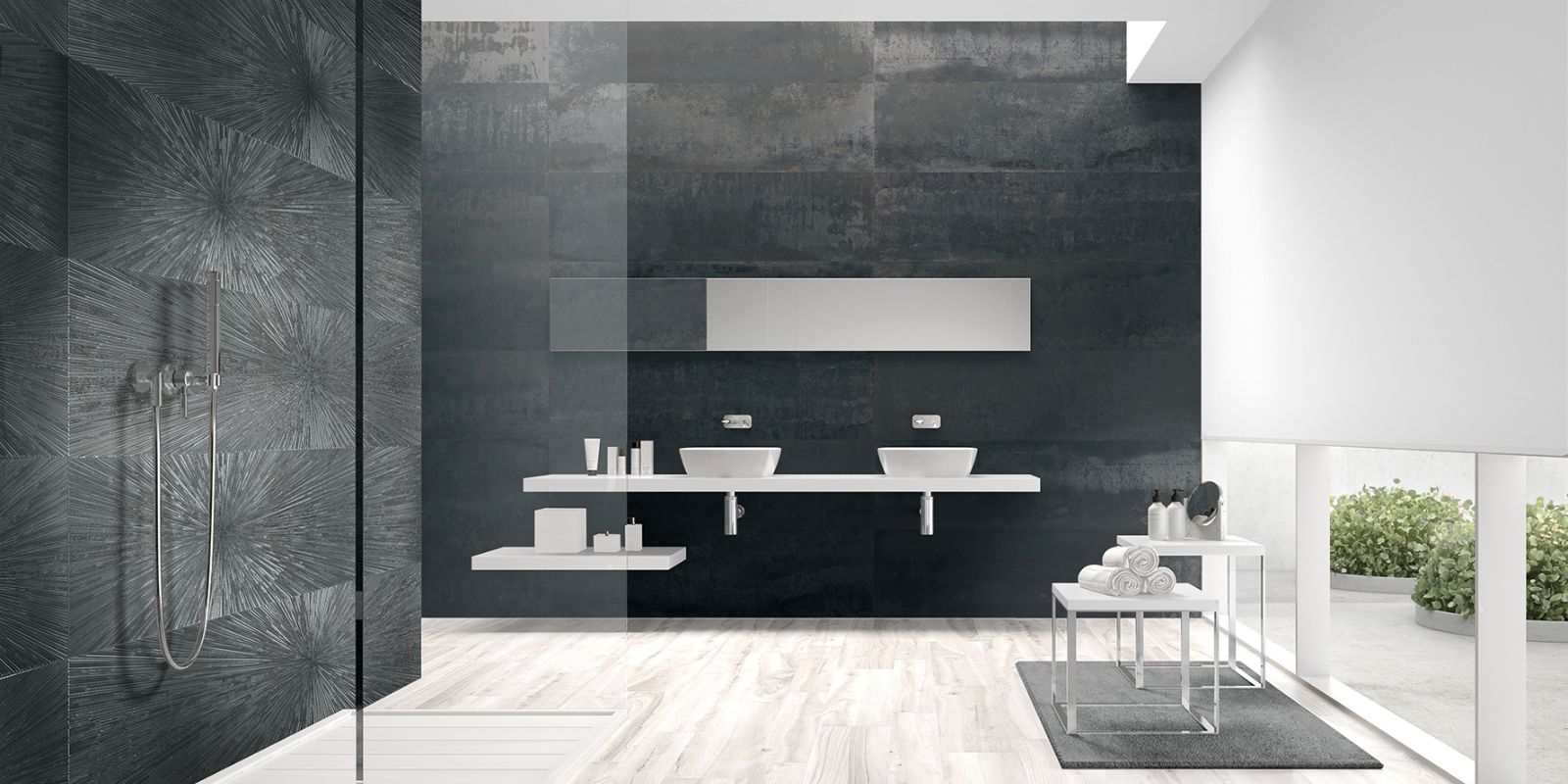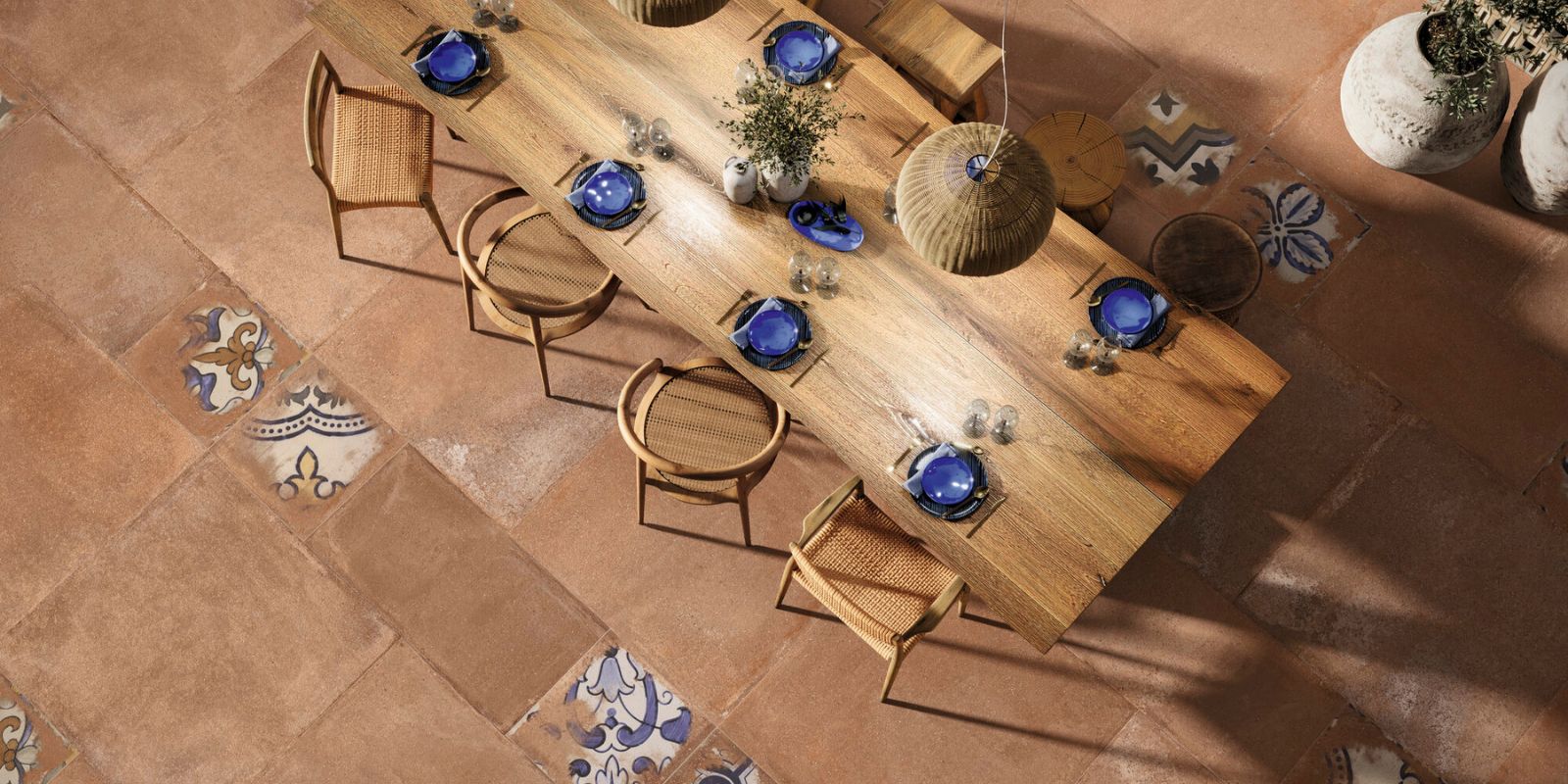
Porcelain Versus Ceramic Tile: Which Should You Choose for Your Home?
Choosing the right tile for your home can be a daunting task, especially when deciding between porcelain and ceramic options. Both materials offer unique benefits and are popular choices for flooring and wall coverings. This article explores the key differences between porcelain versus ceramic tile, including their composition, durability, water resistance, and ideal applications. Whether you’re renovating a bathroom, kitchen, or outdoor space, understanding these two materials will help you make an informed decision that balances style, functionality, and budget.

An Introduction to Ceramic Tiles
Ceramic tiles are a popular choice for home flooring due to their versatility, affordability, and low maintenance. Often compared to porcelain tiles, ceramic tiles offer a durable and aesthetically pleasing option for many homeowners. Made from natural clay and inorganic materials, ceramic tiles are formed from a mixture of clay, water, and other natural materials, then shaped and fired at high temperatures in a kiln to enhance their strength and durability. This manufacturing process creates a resilient surface suitable for various environments. Ceramic tiles offer a budget-friendly option for flooring, with prices varying by style, size, and quality, making them an attractive option for utility rooms, bathroom walls, and other areas with light foot traffic. The glaze applied on ceramic tiles provides protection and aesthetic appeal, but the tile body beneath is more porous compared to porcelain. In fact, this higher porosity means ceramic tiles are best suited for indoor areas with lower moisture exposure.
An Introduction to Porcelain Tiles
Porcelain tiles are crafted from a refined clay mixture combined with finely ground sand and feldspar, fired at even higher temperatures than ceramic tiles. After the firing process, porcelain tiles achieve a higher density, which contributes to their superior durability, hardness, and resistance to scratches, stains, and moisture. Porcelain tiles absorb less water than ceramic tiles, making them especially suitable for areas with frequent water exposure. Due to their low porosity and exceptional durability, porcelain tiles are highly resistant to moisture, stains, and wear, making them ideal for high-traffic areas, bathroom flooring, kitchens, and outdoor areas. They are also considered safe for wet and high-traffic environments because of their slip resistance. Porcelain tiles are perfect for use outdoors, such as patios and balconies, thanks to their weather resistance, and are an excellent choice for pool surrounds and other wet outdoor spaces. Porcelain tiles often require professional installation because of their density and hardness, but their superior strength and water resistance make them a long-lasting and low-maintenance flooring option. While typically more expensive than ceramic tiles, porcelain tiles offer excellent value for spaces demanding hard-wearing, stain resistant, and water-resistant surfaces. Their low water absorption rate also makes them frost resistant, suitable for outdoor applications in colder climates.
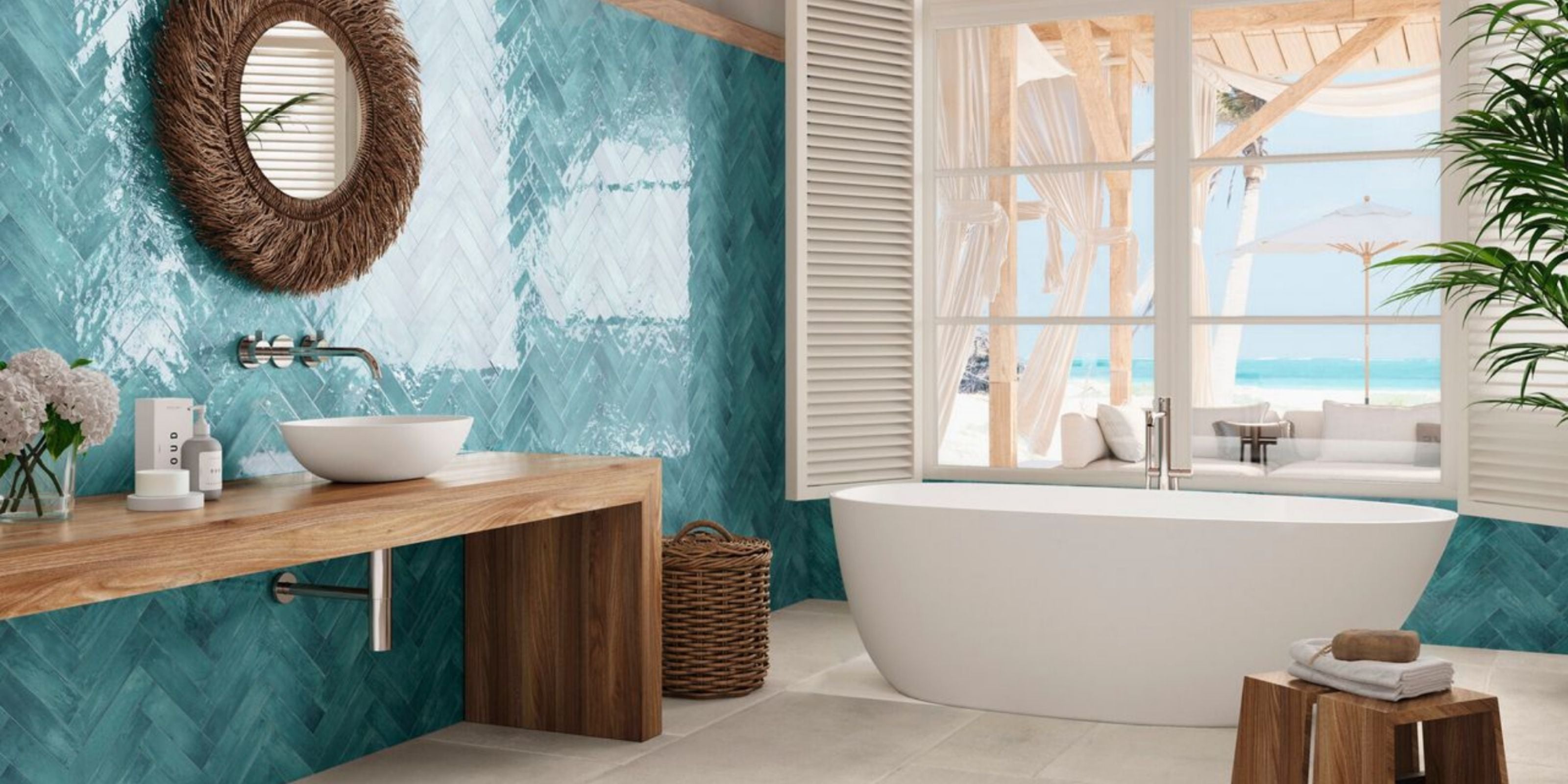
Composition and Manufacturing of Ceramic and Porcelain Tiles
The main difference between porcelain and ceramic tiles lies in their composition and manufacturing process. Porcelain tiles are made from a refined clay mixture that includes finely ground sand and feldspar, fired at higher temperatures than ceramic tiles, resulting in a dense composition with superior durability. This composition makes porcelain tiles highly resistant to moisture, stain resistant, and able to withstand significant pressure and external forces, making them suitable for high foot traffic areas, commercial spaces, and outdoor applications. In contrast, ceramic tiles are made from natural red, brown, or white clay, baked at high temperatures and then glazed, which makes most ceramic tiles more porous and less durable than porcelain. The firing process of porcelain tiles enhances their strength, water resistance, and frost resistance, making them a popular choice for bathroom flooring and walls. Additionally, porcelain tiles come in two types: through-body (or full-body) porcelain tiles, where the tile body is consistent throughout, with color and design running all the way underneath the surface, making them ideal for high-traffic areas due to their chip resistance, and glazed porcelain tiles, which have a decorative glaze on top.
Water Absorption Rates and Durability
Water absorption rates are a crucial factor in tile selection. Porcelain tiles have very low water absorption rates, typically below 0.5%, making them ideal for areas exposed to high moisture such as bathroom floors, bathroom walls, and outdoor spaces. Ceramic tiles have higher water absorption rates, generally between 0.5% and 3%, which makes them less suitable for wet areas but still a great option for wall coverings and areas with underfloor heating systems. Porcelain tiles’ low porosity makes them highly water resistant and frost resistant, suitable for outdoor applications in many climates.
Regarding durability, porcelain tiles offer exceptional durability and wear resistance, making them suitable for high traffic areas and commercial spaces. Ceramic tiles, while less durable than porcelain, are still a reliable and attractive option for most domestic floors. Based on their PEI rating, many ceramic tiles are appropriate for areas with moderate foot traffic, such as kitchens, hallways, and other common household spaces. However, ceramic tiles may chip more easily when subjected to heavy impacts due to their less dense tile body.
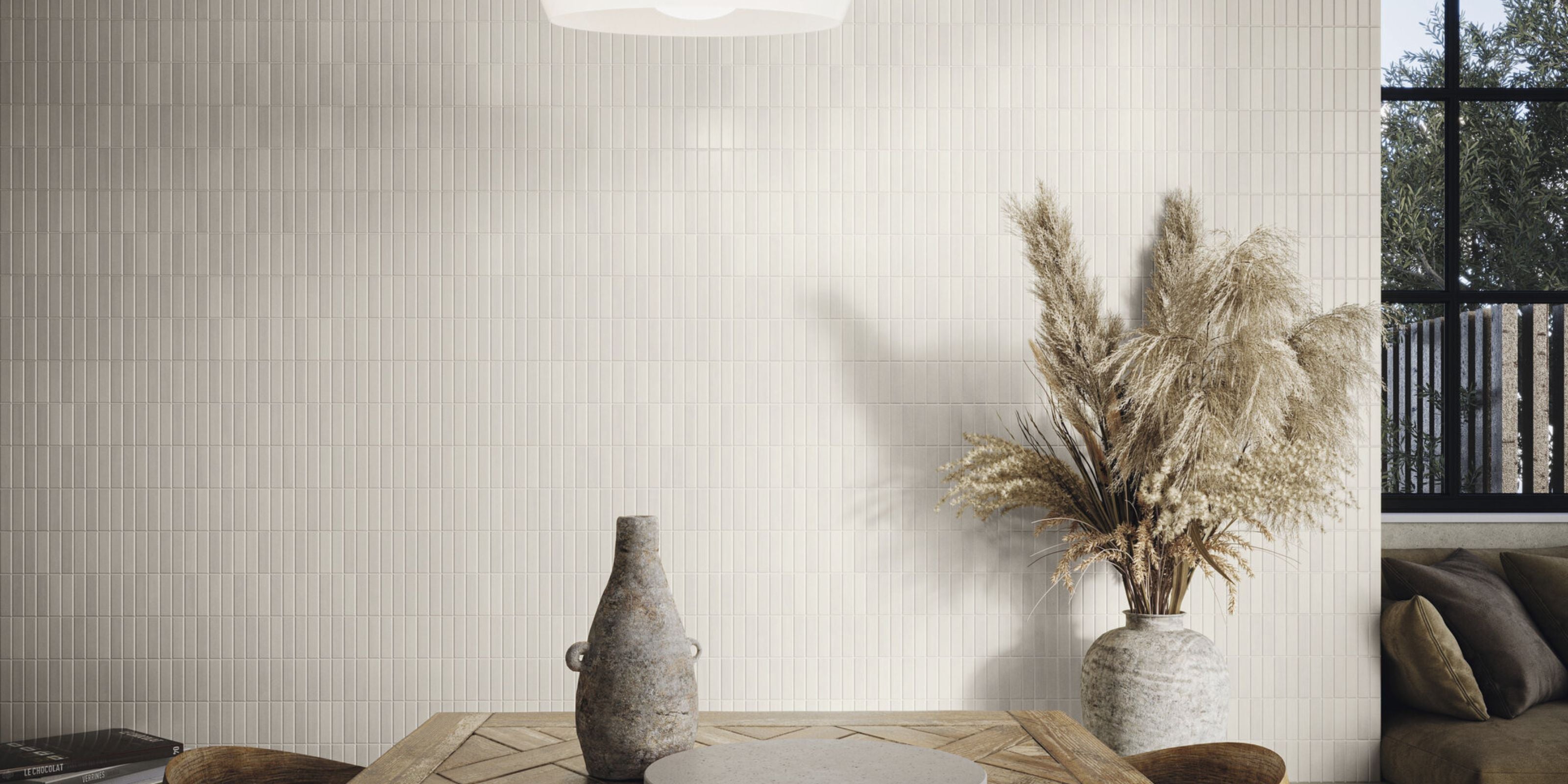
High Foot Traffic Areas and Tile Selection
High foot traffic areas, such as commercial spaces and busy entryways, require tiles with excellent durability and wear resistance. Porcelain tiles are ideal for these areas due to their superior hardness, stain resistant properties, and slip resistance. While ceramic tiles can be used in high traffic areas, they may require more maintenance, especially in wet or high moisture environments. Selecting the right tile choice for high foot traffic areas can significantly impact the longevity and appearance of the floor, with porcelain tiles generally offering the best performance and value.
Aesthetic Appeal and Design Options
Both porcelain and ceramic tiles offer a wide range of aesthetic appeal and design options. They can mimic natural materials such as stone, marble and wood, and come in matt and polished varieties that enhance their appearance. Homeowners’ aesthetic preferences play a significant role in choosing between porcelain and ceramic tiles. Some prefer the natural look of ceramic tiles, while others opt for the sleek, modern appearance of porcelain tile flooring. Both types can be used to create a variety of designs, from modern to traditional, and can be paired with other natural materials to achieve a unique look. The variety of colors, textures, and finishes available makes ceramic and porcelain tiles attractive options for any tile choice. Advances in printing technology allow porcelain tiles to closely replicate the look of natural stone and wood, making them a competitive alternative to natural stone flooring.
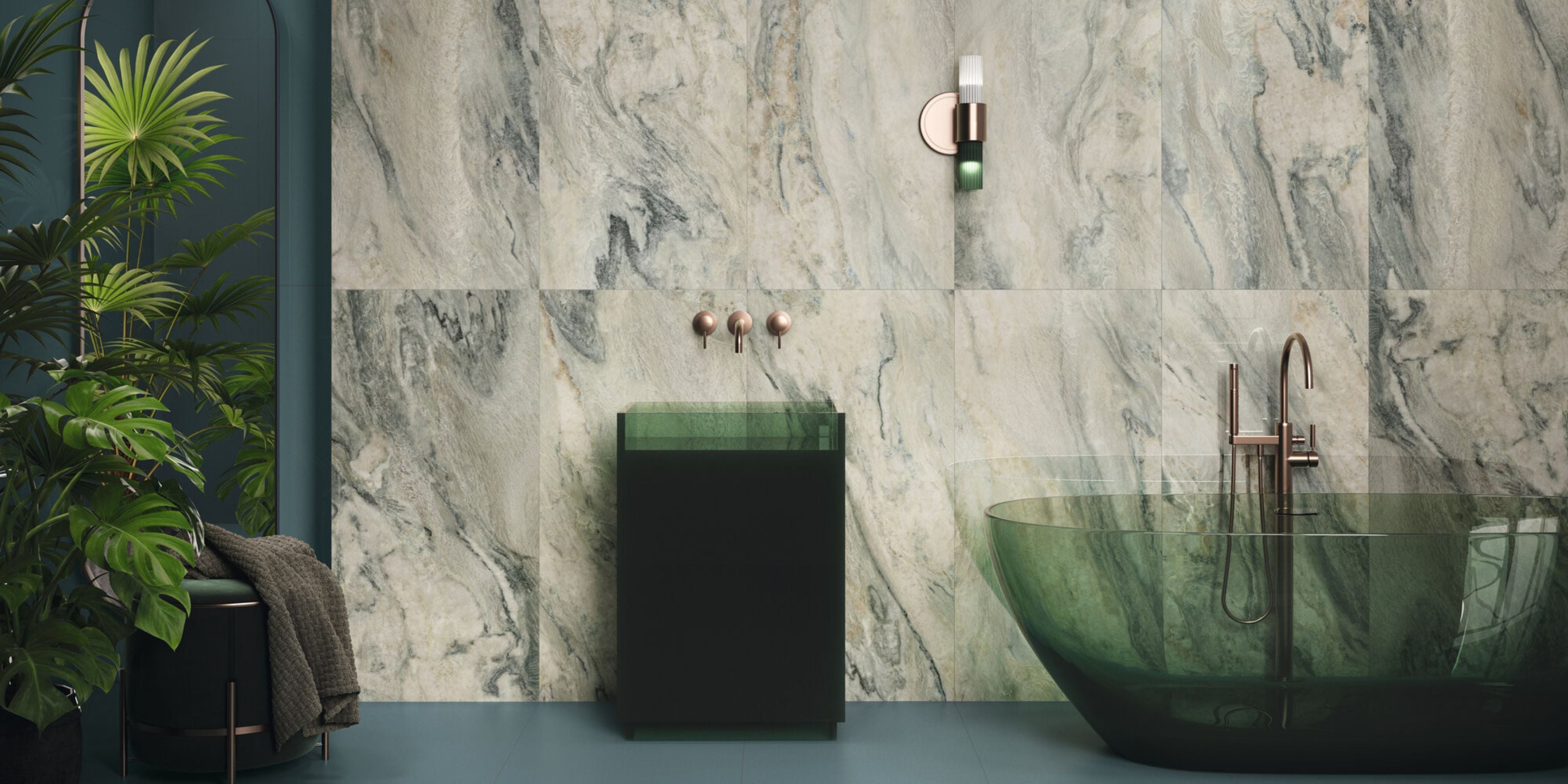
20mm Porcelain Tiles for Outdoor Use
20mm porcelain tiles are an excellent choice for outdoor applications due to their exceptional durability, low porosity, and resistance to weather elements. Their dense composition and firing at higher temperatures result in a tile that is highly water resistant, frost resistant, and able to withstand heavy foot traffic and impact without chipping or cracking. These properties make 20mm porcelain tiles ideal for patios, driveways, and other exterior surfaces exposed to moisture, temperature fluctuations, and wear. They are also particularly suitable for use around a pool, where their slip resistance and water resistance provide a safe and practical solution for wet areas. In contrast, ceramic tiles, which have a higher water absorption rate and are less dense, are more prone to damage from freeze-thaw cycles and heavy use, making them unsuitable for outdoor environments. Therefore, 20mm porcelain tiles provide a reliable, long-lasting, and low-maintenance solution for outdoor tiling projects.
Commercial Spaces and Porcelain vs Ceramic Tiles
Porcelain tiles are often the preferred choice for commercial spaces due to their exceptional durability, slip resistance, and ability to withstand heavy foot traffic. While ceramic tiles can be used in commercial settings, especially for bathroom walls and light traffic areas, they may require more maintenance and upkeep compared to porcelain tiles. The main difference between porcelain and ceramic tiles—composition, manufacturing process, and durability—makes porcelain tiles better suited for commercial spaces and high traffic areas. However, ceramic tiles offer a more budget-friendly option for commercial spaces with light foot traffic. The PEI rating system can help identify suitable tiles for commercial use, with porcelain tiles typically rated higher for abrasion resistance.
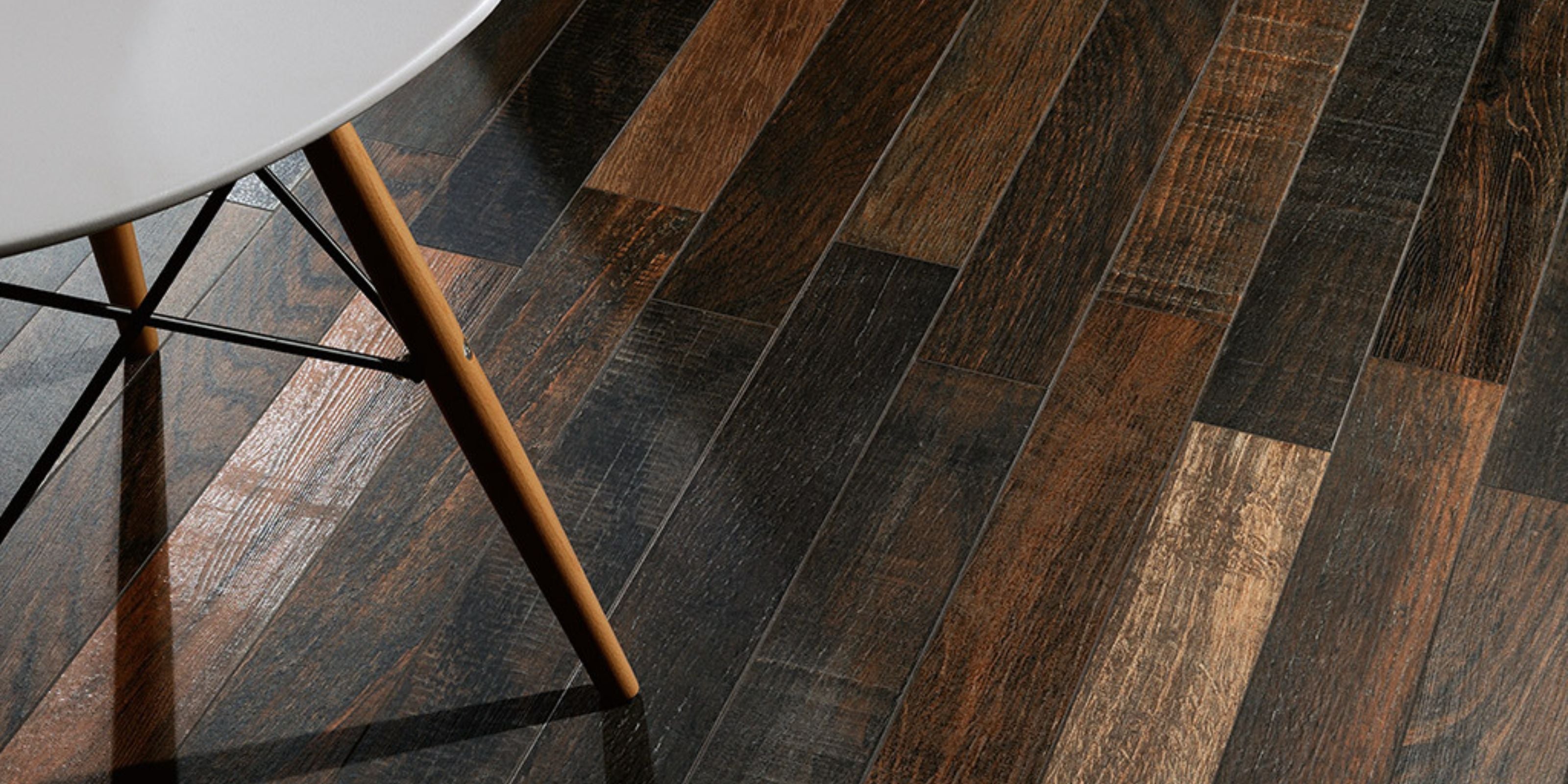
Main Difference and Choosing the Right Tile
To make the best choice for your project, it's important to understand the key differences between porcelain and ceramic tiles.
Here’s a quick comparison at a glance: Porcelain tiles are made from a denser, more refined clay mixture and fired at extreme heat, resulting in a less porous and more durable tile. Ceramic tiles, made from a more porous clay mixture, tend to absorb more water and are less resistant to wear.
Choosing the right tile depends on various factors including foot traffic, moisture levels, aesthetic preferences, and budget. Porcelain tile flooring is better suited for high traffic and moisture-prone areas, while ceramic tiles offer an attractive option for spaces with light traffic. Both porcelain or ceramic tiles can be used for wall tiles, floor tiles, and outdoor areas, making them versatile choices for homeowners despite the price difference. Porcelain tiles’ superior hardness also means they are more resistant to scratches and stains, adding to their longevity.
If you’re ready to start your tiling project, consider ordering samples to compare in your space or buy your preferred tiles with confidence.
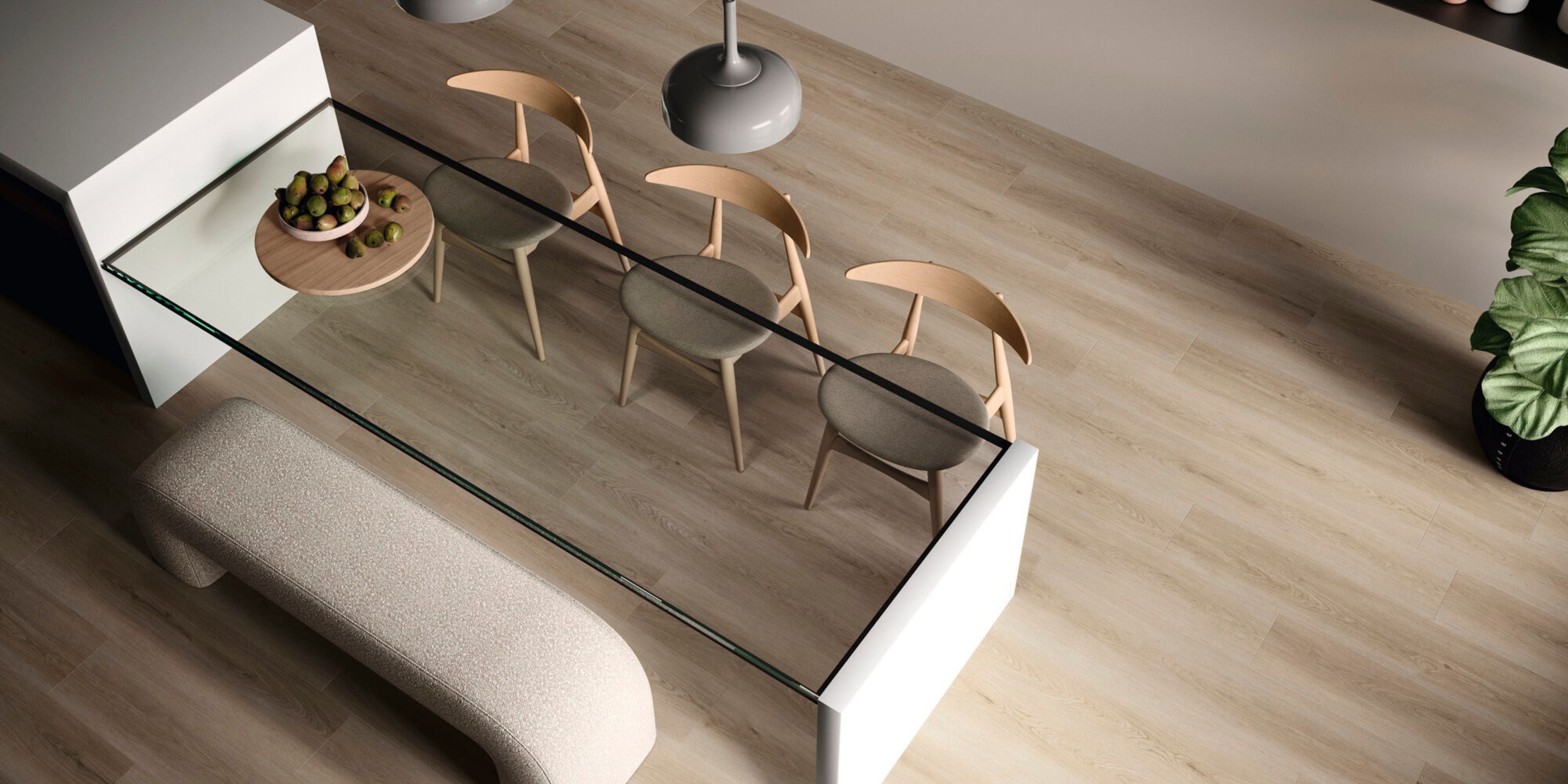
Benefits of Ceramic Tiles
Ceramic tiles offer a host of advantages that make them a standout choice for a variety of flooring and wall applications. One of the most notable benefits is their exceptional durability—ceramic tiles are designed to handle heavy foot traffic, making them ideal for busy areas like kitchens, hallways, and even patios. Thanks to their highly resistant surface, ceramic tiles can withstand years of use without showing significant wear, ensuring your floors look great for decades.
Another key advantage is their resistance to stains and moisture. This makes ceramic tiles a smart option for wet areas such as bathrooms and laundry rooms, where spills and splashes are common. DIY enthusiasts will appreciate that ceramic tiles are generally softer and easier to cut and shape compared to porcelain tiles, simplifying the installation process and making it more accessible for home projects.
Affordability is another reason why ceramic tiles are so popular. Compared to porcelain tiles, ceramic tiles offer a budget-friendly solution without sacrificing style or performance. With a wide range of colors, textures, and finishes available, ceramic tiles can enhance the look of any room, from a cozy bedroom to a stylish bathroom or a welcoming patio. Whether you’re updating a single room or renovating your entire home, ceramic tiles offer the versatility, durability, and value you need to create beautiful, long-lasting floors and walls.
Cost Considerations and Budget
When comparing ceramic and porcelain tiles, understanding the cost differences is essential for making the right choice for your home or commercial space. Ceramic tiles are generally more affordable, with prices typically lower per square foot. This price difference can have a significant impact on your overall budget, especially for larger flooring or wall tiling projects.
It’s worth noting that while ceramic tiles may be less expensive upfront, they may require more frequent maintenance over the years, which can add to their long-term cost. Porcelain tiles, although more expensive initially, offer exceptional durability and resistance to damage, making them a smart investment for high traffic areas and commercial spaces where longevity is a priority. When comparing ceramic and porcelain tiles, remember to factor in the cost of installation as well—porcelain tiles can be more difficult to install, potentially increasing labor costs.
Ultimately, the best choice depends on your specific needs, budget, and the areas you’re looking to tile. By understanding the advantages and long-term costs of each material, you can find the perfect balance between affordability and performance. Whether you prioritize the budget-friendly nature of ceramic tiles or the long-term value and exceptional durability of porcelain tiles, making an informed decision will ensure your flooring remains beautiful and functional for years to come.
Ceramic and Porcelain Tile Installation
Both ceramic and porcelain tiles should be installed professionally for best results, especially for large or complex projects, to ensure proper installation and minimize damage. The installation process involves preparing the subfloor, laying the tiles, and grouting the grout lines. Porcelain tiles require a more stable and level subfloor due to their density and weight. While DIY enthusiasts can install ceramic tiles with relative ease, porcelain tiles are more challenging to cut and install, often requiring specialized wet tile saws and expertise. Proper installation is essential for ensuring a long-lasting, water resistant, and low-maintenance floor. Additionally, glazed tiles, common in ceramic and porcelain options, require careful handling during installation to avoid damage to the surface finish. Both materials require sealing of grout lines to prevent moisture penetration, with ceramic tiles generally requiring more frequent sealing.
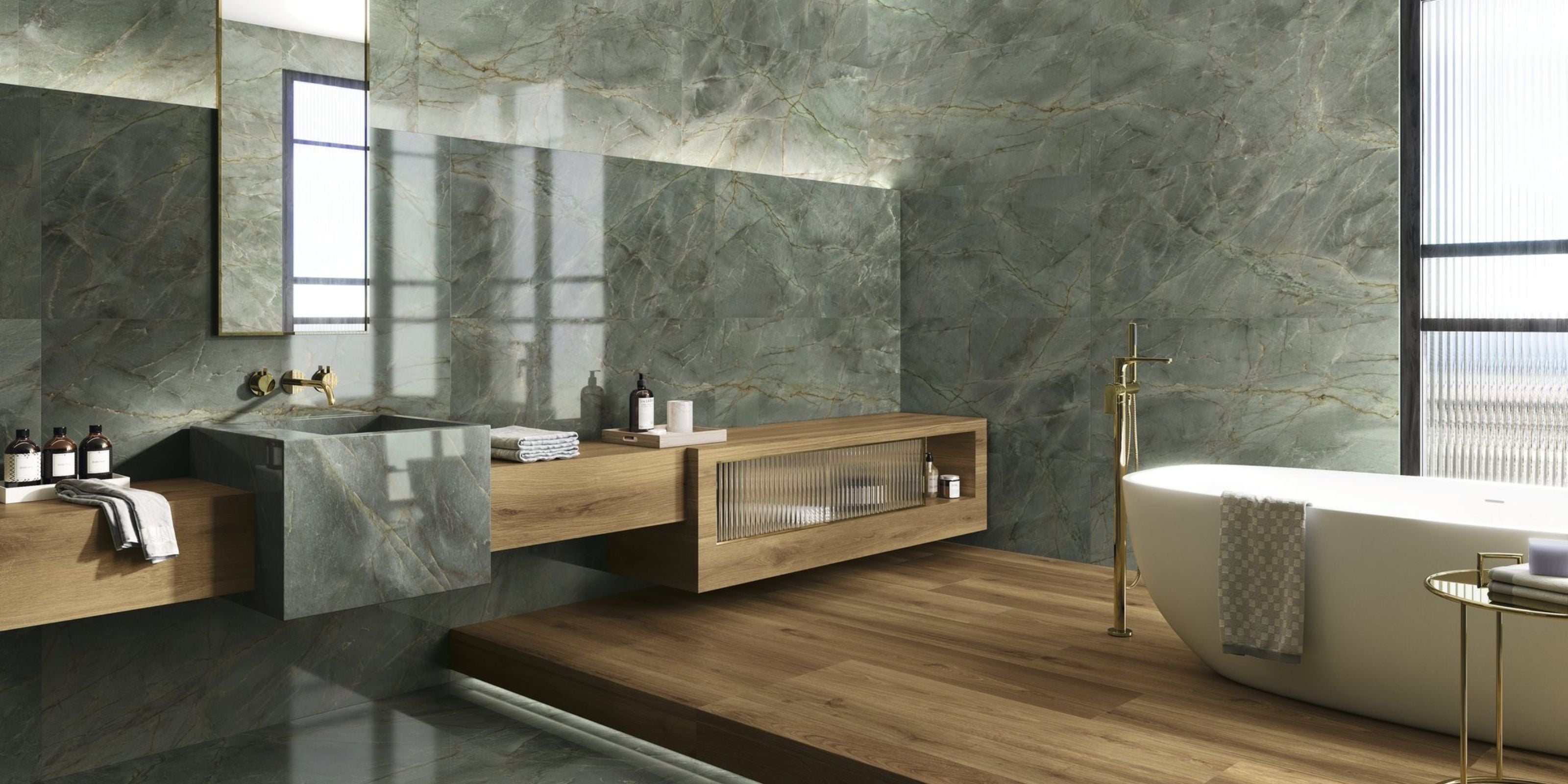
Summary of Pros and Cons of Porcelain Tiles Compared to Ceramic Tiles
Pros:
- Porcelain tiles offer superior durability and hardness, making them more resistant to chips, cracks, and wear.
- They have a low water absorption rate (below 0.5%), making them highly water resistant and stain resistant.
- Ideal for wet tile applications such as bathroom flooring and outdoor areas.
- Versatile and suitable for high traffic areas, commercial spaces, and outdoor installations.
- Modern manufacturing techniques allow porcelain tiles to mimic natural materials like stone and wood with high realism.
- Porcelain tiles tend to have a longer lifespan with less frequent need for replacement or repair.
Cons:
- Porcelain tiles generally cost more per square foot than ceramic tiles, impacting the overall tile choice budget.
- Their density and hardness make them more challenging to cut and shape, complicating DIY projects.
- Installation often requires professional expertise and specialized tools, increasing labor costs.
- Porcelain tiles are heavier than ceramic tiles and require a sturdy subfloor for proper support.
- Damaged porcelain tiles can be more difficult and costly to repair or replace compared to ceramic tiles.
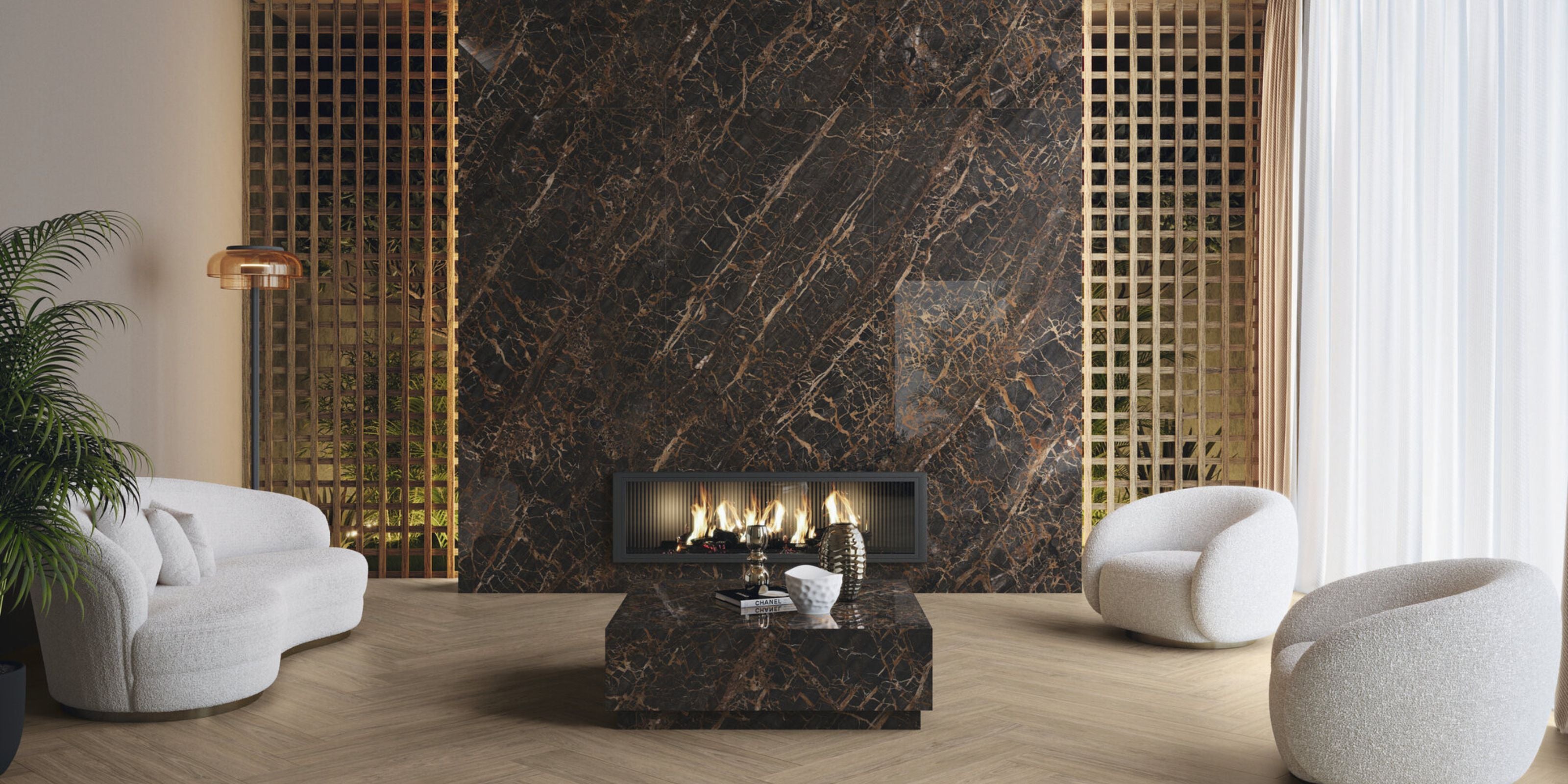
This comprehensive overview helps homeowners and professionals weigh the benefits and drawbacks of choosing porcelain versus ceramic tile, enabling an informed tile choice that balances aesthetic appeal, durability, and budget considerations for any project. Whether you are renovating a bathroom, updating kitchen flooring, or designing a commercial space, understanding the unique qualities of each tile type is essential to achieving the perfect finish. At Tile Outlet, we offer a large range of both porcelain tiles and ceramic tiles to suit every style and need. Our extensive selection ensures you can find the ideal tile that combines beauty, functionality, and value, backed by expert advice to guide you through your tile choice. Explore our collection today and discover how Tile Outlet can help transform your space with the perfect porcelain or ceramic tile solution.


